Break the Ice Media & Travel Alliance Partners have merged to offer you more as Travel Alliance Partnership.

How to Leverage Local in Your Tourism Marketing
Visiting friends and family is an often overlooked travel motivation for incoming visitors when it comes to tourism marketing. It was one of the top choices (62%) for travel motivations in the 2021 US Family Travel Survey . In a survey on why people travel published by Pacaso in January 2023 , 38% of respondents named visiting family and friends as their primary reason for travel. Combine these stats with the popularity of supporting local businesses among both travelers and locals, and you have several reasons to leverage local in your tourism marketing.
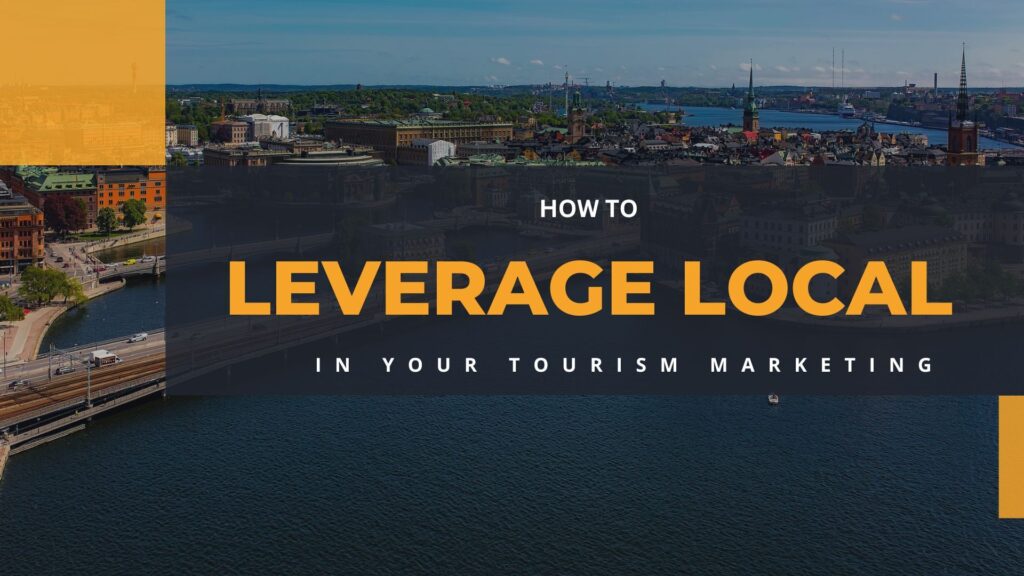
So how can you tap into the “visiting friends and family” traveler market?
As with any marketing plan, we always turn to the PESO model to ensure cross-channel messaging.
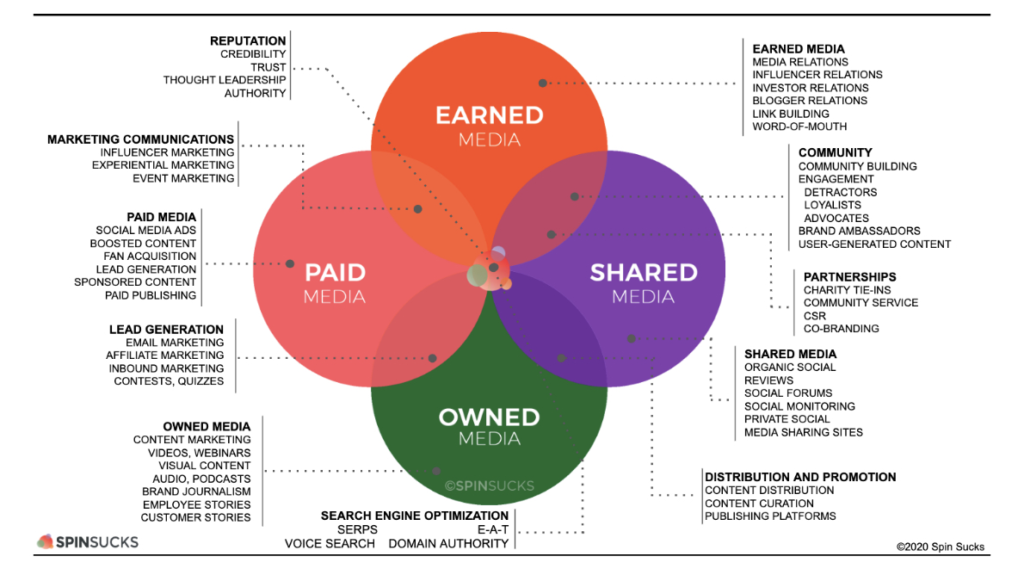
Paid Media Tactics
Include the local geography as a portion of the target audience .
Earned Media Tactics
- Send press outreach materials to the local media.
- Also keep in mind that your locals are the ones leaving the majority of reviews at restaurants and attractions.
- Identify and work with local influencers – the best brand ambassadors you may not know yet!
Owned Media Tactics
Some destinations have locals who contribute to their owned channels, especially via blogs, to give the insider’s look at a destination that so many visitors crave.
Shared Media Tactics
While we often think of this segment of marketing as the main social platforms, it also includes community building. That’s where we can really dig in to building a community within your local audience that support tourism efforts and who “get” and spread your tourism messages.
- Create community partnerships with key stakeholders like Cayuga County, NY, did with their Harriet Tubman campaign. (Listen: episode 295 of Destination on the Left with Karen Kuhl )
- Start a brand ambassador program to promote tourism marketing and messages. With the local community behind you, the people in your area can be a strong force for those messages.
- Turning back to social media, use User Generated Content (UGC) in your social strategy.
Connecting with the residents, embracing them into destination marketing and also listening to them and letting them shape what tourism means in the destination, is the way of the future.
Local Brand Ambassadors
Your locals play an essential role in sharing the experiences and stories of visiting friends and relatives, reminding others of the importance of creating happy memories with loved ones. To create a successful brand ambassador program, first, identify the type of ambassadors that would be most beneficial to your destination. Is it a group of local influencers? Or is it passionate members of the community?
Give them the tools, resources, and experiences they need to become an advocate for your destination, such as:
- Social media toolkits with branded content and hashtags
- Invites to pre-opening events, special promotions, and experiences
- Training on unique local events, customs, and attractions
- Branded merchandise like t-shirts, hats, bags, and other swag items to show off their involvement with your community
Example Brand Ambassador Programs
Take a look at what these destinations are doing, to inspire your future Brand Ambassador program!
Visit Loudon in Virginia has a robust program centered around its front-line workers , with education modules, in-person events, employer information, discounts and a point of contact.
Colorado Springs recently created a program for residents with a social media account . Ambassadors receive emails with information that can easily be shared on their own social platforms.
North Alabama has a brand ambassador program for local influencers . There are several requirements for the program, including residency in the North Alabama counties and requirements for posting. In return, ambassadors receive swag and features on the website and social channels.
Quad Cities went as far to move their former QC Pro ambassador program to a Certified Tour Ambassador ™ program . Citizens who join the program must register, complete required reading and take a 4-hour in-person class and pass an exam to gain accreditation.
Camille Zess
Related Posts
Outdoor Recreation Trends
Outdoor participation is at a record-high, a dynamic uptick that has made a significant impact on the travel and tourism industry since 2020. This evolution…
Collaboration Drives Sustainable Tourism
Sustainable tourism has growing importance in the world of travel and tourism. As destinations grow in popularity, they need to collaborate closely with residents, local…
- Collaboration (52)
- Content Development (6)
- Facebook Advertising (4)
- Industry News (1)
- Destination Leadership (30)
- Crisis Communications (1)
- Influencer Marketing (7)
- Travel PR (32)
- Strategic Planning (7)
- Destination Marketing (139)
- Group Travel (27)
- Virtual Events (139)
Collaboration Toolkit

Our first research study confirmed that collaboration is a constant in the travel, tourism and hospitality industry. It is not a matter of if, but when and how, organizations will collaborate together. Our latest study reveals how organizations are putting collaboration into operation and how they are setting up systems and processes so that collaboration becomes a strategic part of the organization.
" * " indicates required fields
The Ultimate Guide to Local Marketing
Discover how local marketing strategies can help boost local brand awareness and bring in new business

FREE MARKETING PLAN TEMPLATE
Outline your company's marketing strategy in one simple, coherent plan.

Updated: 04/03/24
Published: 04/03/24
When I moved to Chicago two years ago, I knew very little about the city and my new neighborhood. As I got comfortable and established myself as a new Wrigleyville resident, I made a very important friend in Google.
Google helped me find the businesses, vendors, and specialists I needed in a new city — from a hair salon and gym to an appliance repairman and locksmith. But Google couldn’t have helped me discover these folks without those businesses investing in local marketing.
Did you know that 97% of people learn more about a local company online than any other medium? In fact, 88% of mobile online searches for local businesses result in either a call or business visit within one day.
If your business caters to a local audience, has several service areas, and/or has a brick and mortar location, local marketing is a must-need strategy. In this guide, we break down local marketing and a slew of helpful strategies to help you get started.
![local marketing tourism Download Now: Free Marketing Plan Template [Get Your Copy]](https://no-cache.hubspot.com/cta/default/53/aacfe6c7-71e6-4f49-979f-76099062afa0.png)
What is Local Marketing?
Local Marketing Strategies
Local marketing ideas, what is local marketing.
Local marketing is a marketing strategy that targets consumers and customers within a certain radius of the physical location(s) of a business. Local marketing is also known as neighborhood marketing or local store marketing.
If you have at least one brick-and-mortar business location (this applies to both local businesses and chains), local marketing is a marketing strategy you should consider adding to your arsenal. Local marketing can work for any brand that has a physical location, but it’s especially important for locally-based businesses whose primary business happens in-person (versus online, where consumers in any location can make purchases).
Local marketing allows you to hone your resources on a select audience — one that can actually respond to and shop from your digital and print advertisements.
The key to successful local marketing is accurately defining your buyer personas . This process helps you better understand your target audience’s demographic and psychographic information, including their geographic location(s). This location data is how you can pinpoint where you can funnel your local marketing energy.
Create official, customizable buyer persona profiles with HubSpot’s free, intuitive buyer persona generator.
If local marketing sounds like an approach you’d like to apply to your own business, make note of these strategies. You may be able to attract new local customers by implementing these for your company. (Hey, sometimes small local businesses have the biggest viral marketing campaigns .)
- Confirm your website is mobile-friendly.
- Localize your website.
- Claim your local listings on third-party websites and directories.
- Invest in local SEO.
- Localize your paid advertising.
- Go local on social media.
- Be active in your community.
- Don’t forget your local media.
- Leverage your ecommerce activity.
Here are 9 local marketing tactics that you can use to attract new business from your local area and surrounding neighborhoods. Don’t hesitate to combine these strategies to strengthen the impact of your local marketing.
1. Confirm your website is mobile-friendly.
You probably aren’t surprised that over half of worldwide internet traffic happens on mobile devices.
But did you know that 61% of mobile searchers are more likely to contact a local business if they have a mobile-friendly site ? A mobile-friendly site is critical to attracting new business, especially local customers.
Mobile-friendly sites load seamlessly when accessed on a mobile device. They often show bigger text, form fields, menus, and buttons, making it easier to browse site information on the go.
Before you embark on these local marketing strategies, confirm your website is mobile-friendly . If you're not sure about your own site's mobile responsiveness, use Google's Mobile-Friendly Test tool .
Discover Content Hub — the first and only combined CMS and CRM that offers the ability to easily build and manage a website optimized for every device and every visitor.
2. Localize your website.
Localizing your website involves making your web content relevant to your local audience and consumer base. First, add location-based terms to your website. For example, instead of “vegan bakery,” your homepage could read “best vegan bakery in Wrigleyville”. This is especially important for niche companies and industries like for law firm marketing or other local goods and services.
Localize your web content wherever relevant, and keep this language consistent between your website, social media, and digital ads.
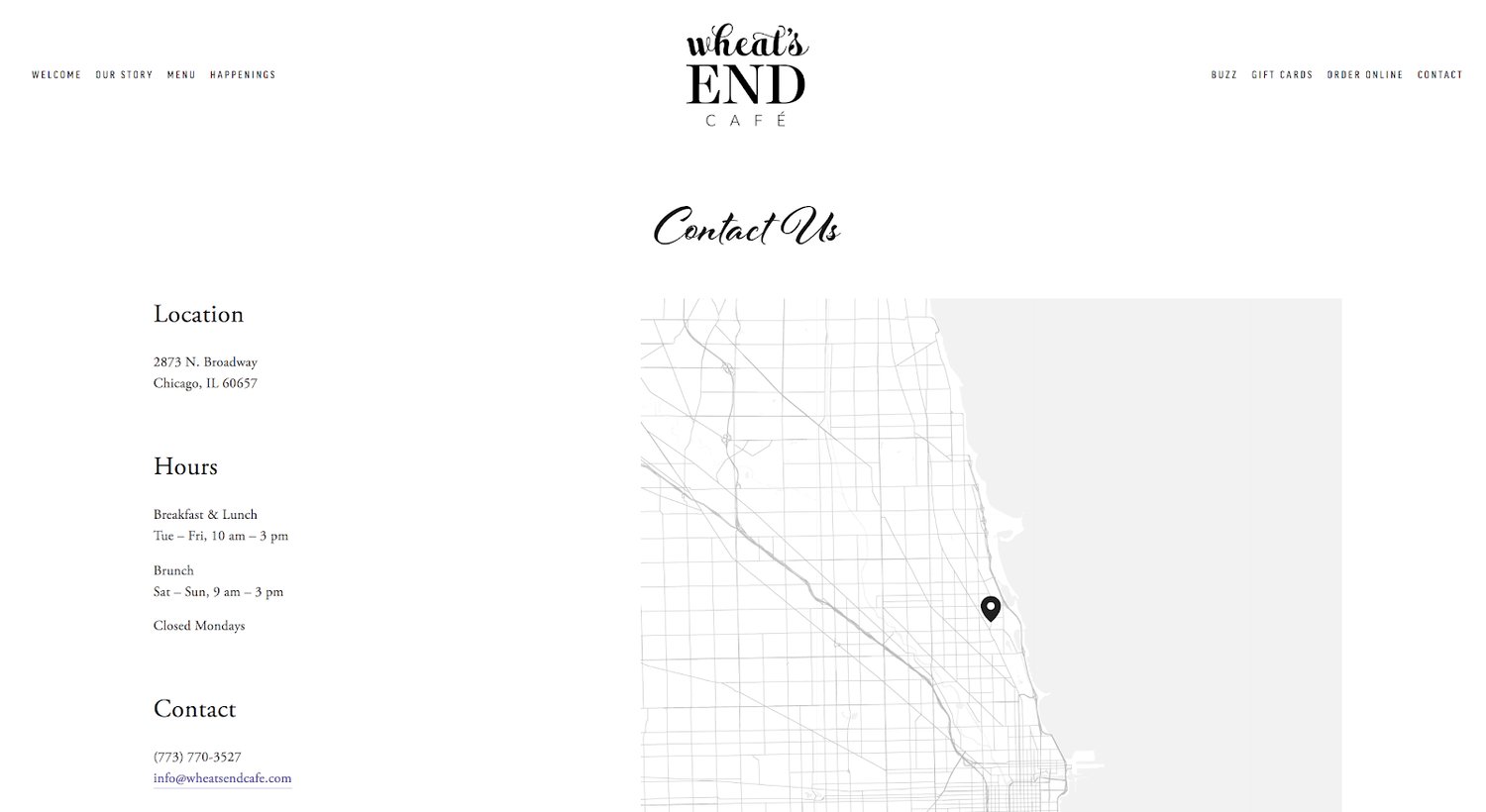
Secondly, add location pages to your website. This is especially important if you have more than one brick and mortar location. These pages publish your business name, address, phone number, and other relevant store information; they also help you rank on local SERPs .
3. Claim your local listings on third-party websites and directories.
There are numerous third-party websites, directories, and review sites that highlight local businesses and educate consumers on where to shop. As a local business, you don’t want to miss out on this traffic (both digital and foot).
These sites are important for SEO and search intent purposes; for example, consistency between your name, address, and phone number information (referred to as NAP) is extremely important, and these directories help you establish that online.
The most important listing you’ll want to claim is Google My Business . This will allow your business information to show up accurately when people search for your name, industry, products, or all the above.
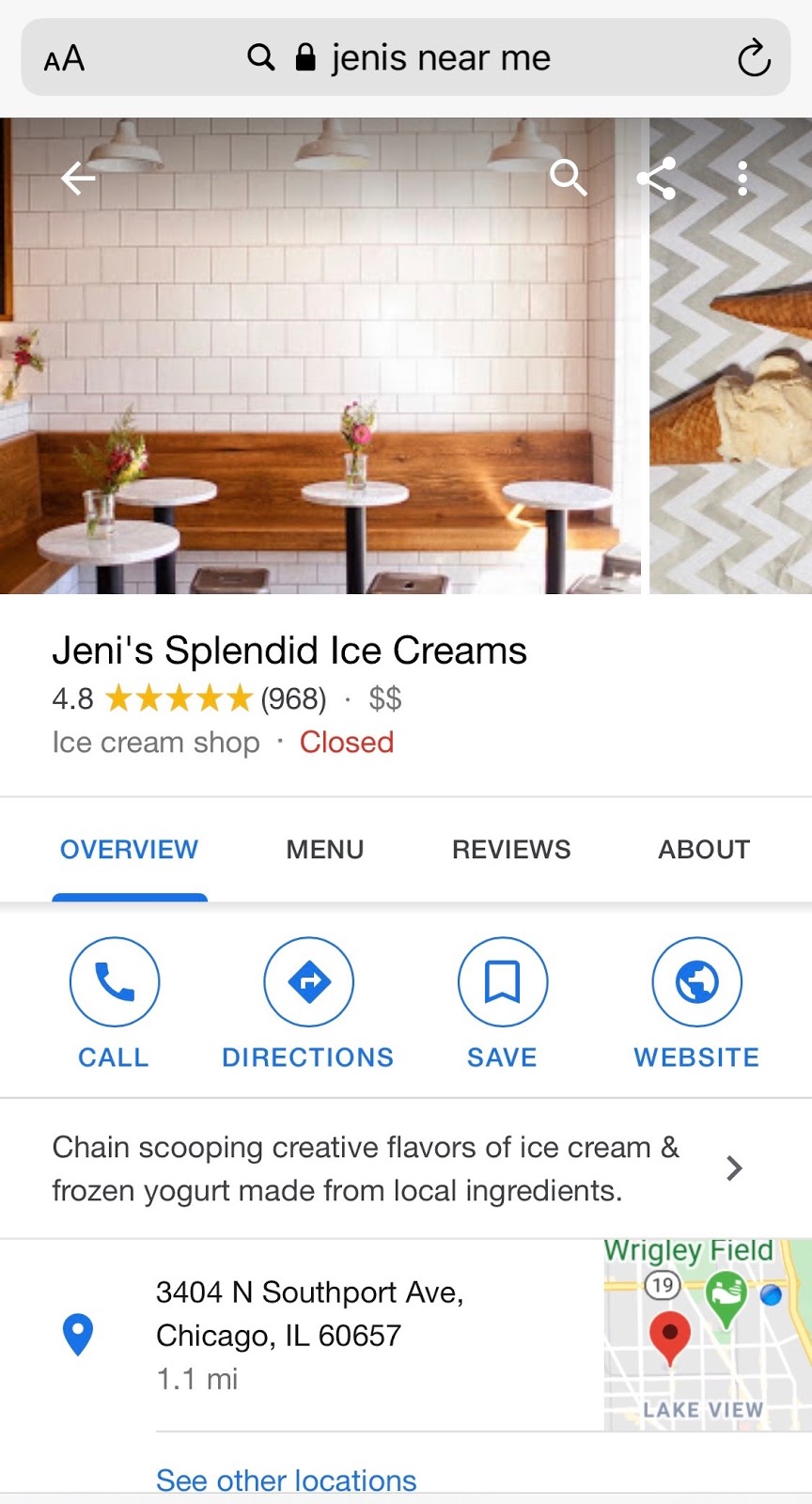
This process will also equip customers to start leaving you reviews — another critical component of drumming up local business. Visit Yelp , Yellow Pages , Better Business Bureau (BBB) , and Foursquare to claim/create these listings, too. Tools like Moz Local simplify this process so you don’t have to do it manually.
Depending on your industry, there may even be service-specific ones you can list on, such as Niche.com or GreatSchools.org .
Setting up these listings legitimizes your business’s online presence and improves your search engine rankings. Most importantly, however, these websites also fuel word-of-mouth marketing — today’s strongest marketing strategy by far.
4. Invest in local SEO.
Local searches lead 50% of mobile users to visit stores within 24 hours. But this wouldn’t be possible without local SEO. Local SEO is optimizing your website to rank for locally-relevant terms and keywords. Google Trends is a helpful tool here for identifying what terms are popular in your location and for your industry.
In addition to localizing your website, create local content. Promote local gatherings, neighborhood events, and industry listings from your area. This type of content helps localize your website and paint you as a local authority.
5. Localize your paid advertising.
Local advertising is another powerful way to reach your local audiences. Not only does this strategy target specific audiences and personas (hint: based on their location), but it also involves adding relevant keywords to your ad content.
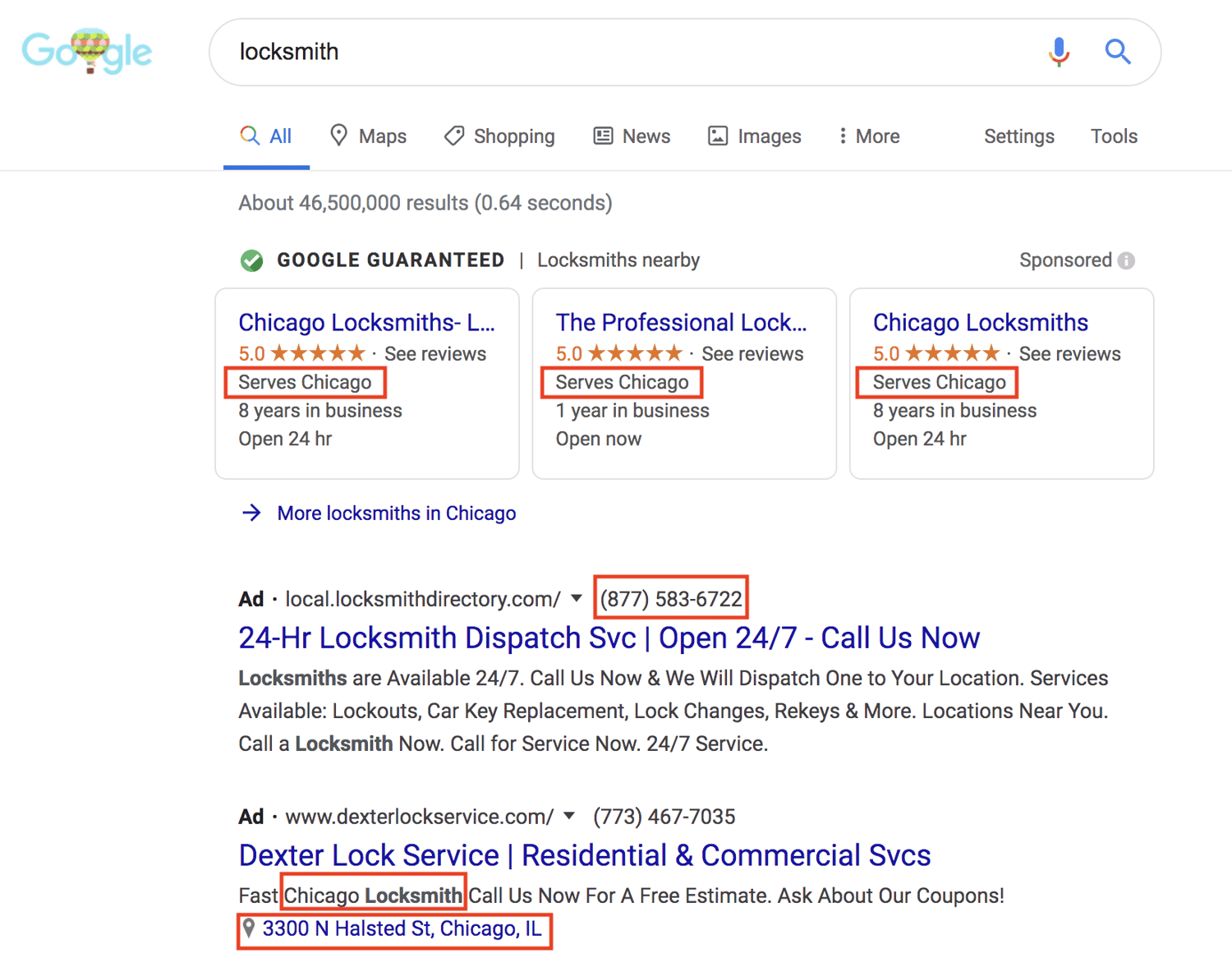
Include terms like your city or neighborhood to your listings and incorporate location data where possible.
6. Go local on social media.
Social media is arguably the quickest and most efficient way to connect with local and global shoppers alike. Most social platforms provide plenty of localization options, from setting a location in your profile to tagging the location of each post.
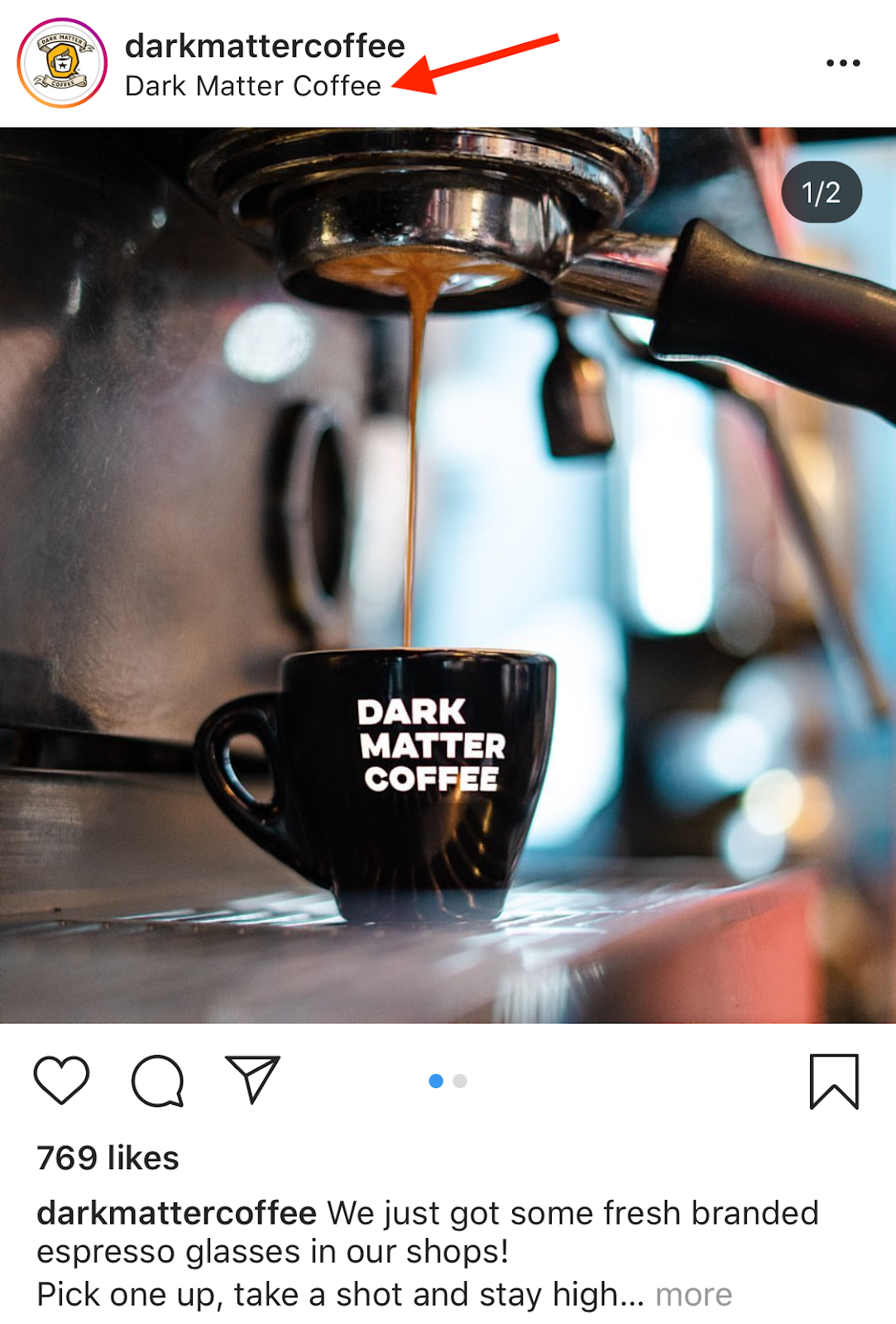
You can also share local hashtags in the caption or comments.
7. Be active in your community.
People are proud of the cities, towns, and neighborhoods they live in, including their local businesses and organizations. When you support your community as a business and employer, your community is likely to support you, too.
Get active with non-profit activities, local sports teams, community school events, county fairs or expositions. If you can’t physically attend, consider sponsoring an event to get more eyes on your brand name.
8. Don’t forget your local media.
Local news consumption is still alive and well. Consumers trust local media to keep them updated about their communities and neighborhoods, and that includes business and economy-related information.
Invest in radio advertising, take out an advertisement in the local newspaper or find your way on your town’s morning news show. Whether you’re marketing your grand opening or simply want to get your brand name out there, any exposure through the local media can help bring new customers to your door.
9. Leverage your ecommerce activity.
Ecommerce and local marketing don’t have to be mutually exclusive; both can bring in new business and provide excellent experiences for your customers. In fact, you can use ecommerce to boost your local business (and vice versa).
For example, consider offering an in-store coupon for every online purchase or providing free in-store pickup or returns. These strategies get customers in the door and browsing your store — even those who discovered you online.
- Distribute local print marketing materials.
- Become a local sponsor.
- Invest in booth space at local events.
- Hold a contest on social media.
- Use a sidewalk sign.
- Set up a suggestion box.
These local marketing ideas put the above strategies to work. Consider adding some of these ideas to your next round of marketing efforts.
1. Distribute local print marketing materials.
Design and print high-quality business cards, postcards, and flyers — even car magnets. Not only will these be a physical piece of your brand for customers to hold onto, but they can equip your customers with the tools to market on your behalf. Bonus: Include a small discount or freebie coupon on your business card to bring customers back.
2. Become a local sponsor.
Get your business name in front of new customers by sponsoring a local sports team, school event, or non-profit fundraiser. This strategy allows you to showcase your brand on signage, marketing materials, and even uniforms.

3. Invest in booth space at local events.
Another way to get new eyes on your business is by purchasing a booth at a local event. The price for booths range depending on the event and anticipated attendance, but it’s always a good investment — you can give away branded merchandise and connect with more members of your local community.

4. Hold a contest on social media.
Use digital channels like social media to increase your foot traffic. Consider holding a contest through which participants can enter on social media and collect their prize in person. You can also offer discounts or free giveaways if shoppers engage with your social media profiles, share their purchases, or tag the business on Facebook or Twitter.
5. Use a sidewalk sign.
Nothing gets the attention of local shoppers like signage. Set up a sidewalk sign outside your business to attract shoppers that are walking or driving by. Be sure to include your business name, “open”, and perhaps your business hours. Another option here is billboard advertising , especially if you’re marketing in a heavily trafficked area.
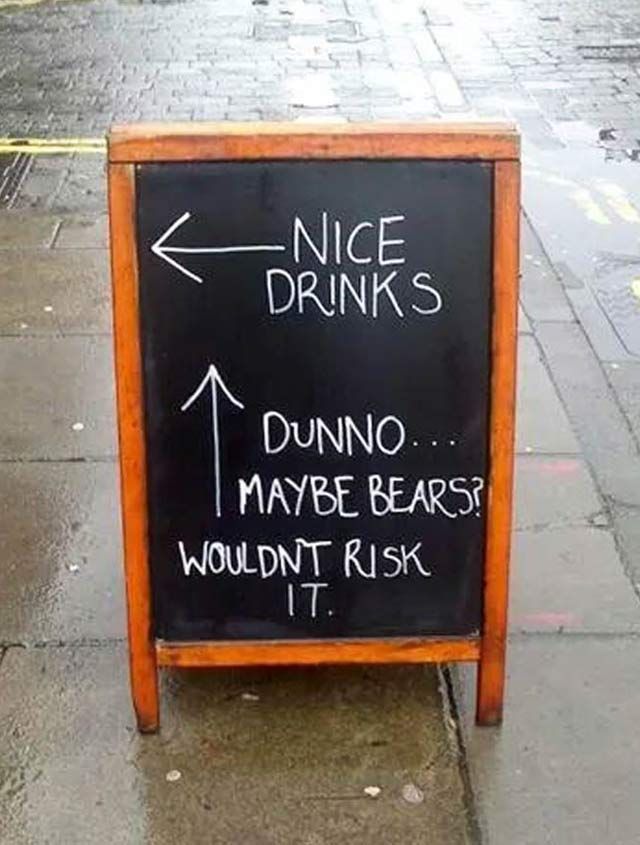
6. Set up a suggestion box.
You’ll never know how to better attract customers if you don’t ask them. Set up a suggestion box in your business to give visitors an anonymous way to share feedback about their experience. Check this box weekly and implement anything new you may learn.
Local Marketing Helps You Grow Better
Local marketing helps you reach new audiences, boosts your search rankings and online traffic, and helps establish your business in your local community. Invest in these local marketing strategies to bring new customers in your doors today.

Don't forget to share this post!
Related articles.
![local marketing tourism What is Localized Content [+When to Use It]](https://blog.hubspot.com/hubfs/localized-content.jpg)
What is Localized Content [+When to Use It]

The Plain-English Guide to Local PPC

Local Lead Generation: The Tips, Tricks, and Tools to Do It Right

6 Amazing Ways to Use Facebook Local Awareness Ads

A Marketer's Crash Course in Hyperlocal Marketing

How to Promote Your Local Business

How to Promote Your Business Through Local Email Marketing
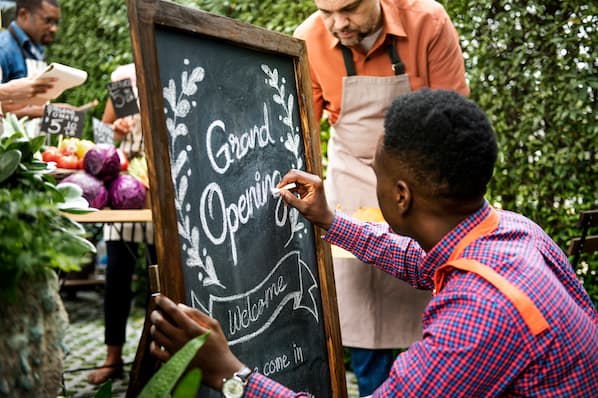
How to Market Your Local Business' Grand Opening
![local marketing tourism What Is Local PR and How Does It Work? [Examples]](https://blog.hubspot.com/hubfs/local-pr.jpg)
What Is Local PR and How Does It Work? [Examples]
![local marketing tourism What is Local Advertising and How Does it Work? [+ Examples]](https://blog.hubspot.com/hubfs/local-advertising.jpeg)
What is Local Advertising and How Does it Work? [+ Examples]
Marketing software that helps you drive revenue, save time and resources, and measure and optimize your investments — all on one easy-to-use platform
5 Marketing Strategies to Attract Local and Regional Travelers

Over 75% of American travelers will take at least one leisure trip in the next 3 months, according to the latest data from Destinations Analysts. As destination marketers ramp up efforts to reach interested visitors, how can you stand out?
Let’s look at 5 examples of destination marketing organizations getting it right.
1 | Double down on car traveler segments
The majority of American leisure travelers—70%—plan to head out of state for their summer vacations. Only one in ten will travel internationally. Cars remain the dominant form of transportation, while 34.2% will get on a plane .
It’s no wonder that many destination marketers like the Arizona Office of Tourism are calling 2021 “Year of the Road Trip.” On its Instagram, Visit Arizona is using a highlight to showcase a variety of experiences while road tripping through the state including hikes, small towns, and vineyards.
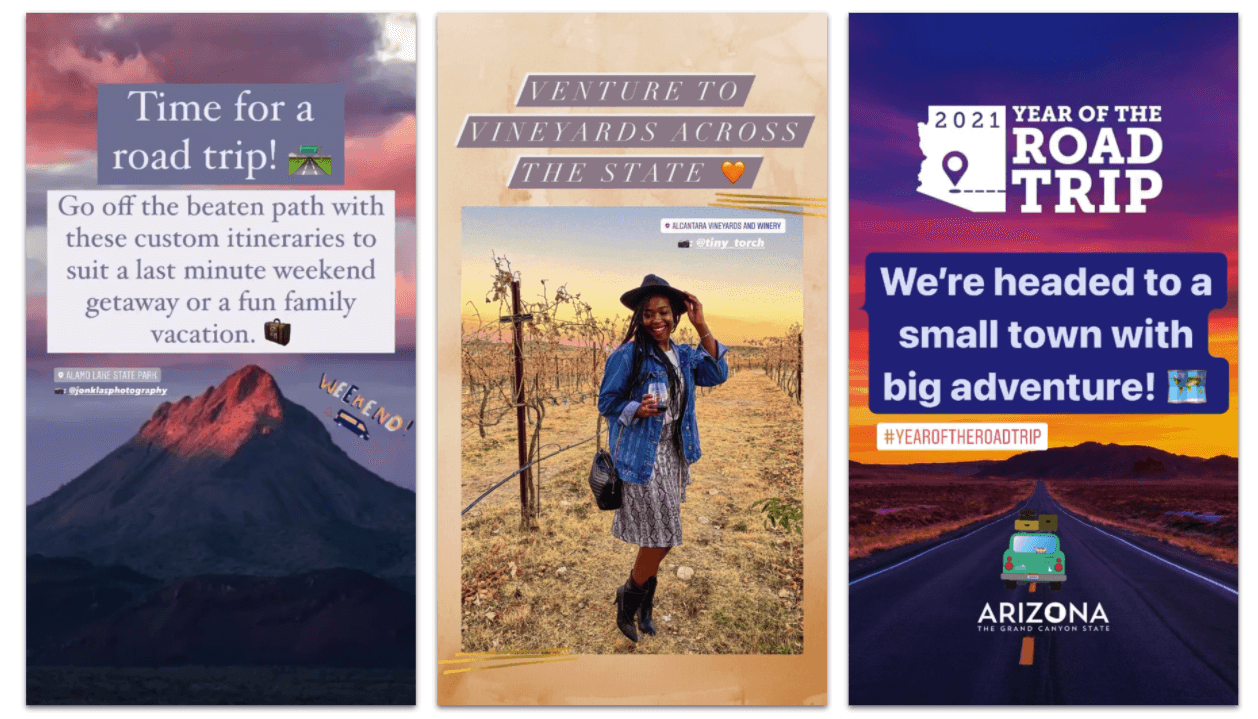
Tip: Find ways to collaborate with regional DMOs on multi-city programs. Think food trails, hiking trails, and road trips.
2 | Focus on what makes your destination unique
When asked what they want most out of travel this year, Americans are looking to “escape and relax, experience beautiful places, do new things and visit places they have been dreaming of.”
Promote the unique, local experiences your visitors can’t get anywhere else. What is authentic and draws visitors to your destination? How do these experiences tie into your brand pillars? Structure your campaigns around these “only-in” things to do, eat and see, like Visit Valencia.
It’s no secret Valencia is renowned for its world-class paella. Every year, the city hosts an international paella cooking competition. Last year due to the pandemic, they were unable to physically hold the event. Instead, they created a video that merged two of the area’s passions: soccer and paella. The video was a hit on their organic channels and helped residents and visitors support local restaurants.
Tip : To cut through the noise on organic social media, invest in creativity. Dubbing soccer-style commentary over visuals of making paella isn’t something you’d expect, but it speaks to the soul of what Valencia is about, which is why this campaign worked so well.
3 | Amplify outdoor experiences
Outdoor experiences continue to dominate 2021 summer vacation plans both across the United States and Europe. Americans are looking for scenic beauty, warm weather, outdoor activities, beach destinations, national parks, and road trips. Across Europe and the UK, over 1 in 3 with upcoming travel plans will head to coastal destinations, while 15% are planning to visit nature and the outdoors .
Travel Wisconsin’s tourism strategy for 2021 is to surface unexpected images, experiences and fresh takes on traditional Wisconsin things like farms, cheese, beer, and outdoor recreation.
The campaign “will target a record-high 12 markets , twice as many as the department’s most successful year of 2019.” Traditional out-of-state, drive markets like Minneapolis and Chicago are important, as are new markets across Iowa, Minnesota, and in-state as well.
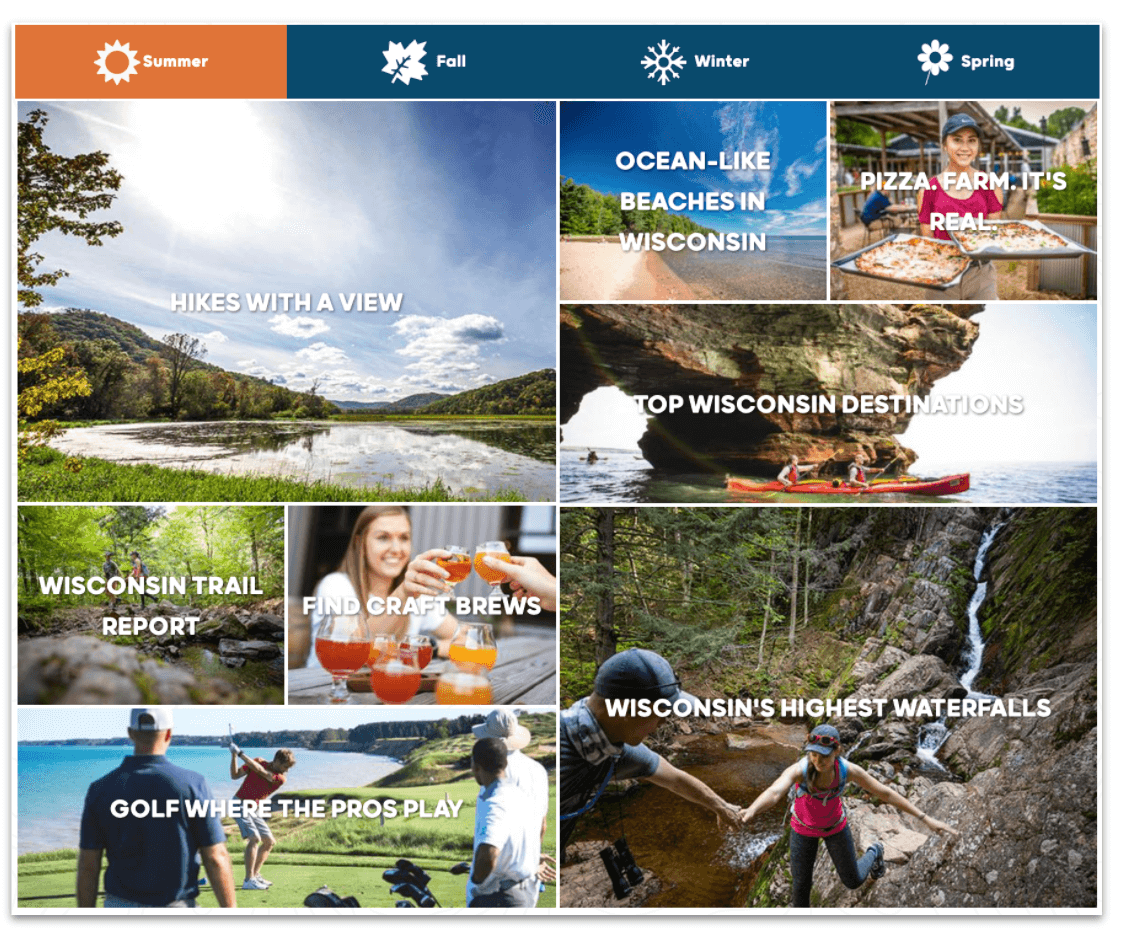
Tip : From a website and SEO/SEM perspective, capitalize on warm weather and outdoor-related searches related to your area. Tailor your messaging and visuals to showcase the breadth of outdoorsy things to do and uncrowded spaces.
4 | Lean into new social media channels
If you have the resources, tap into people’s receptiveness to travel inspiration across new social channels like TikTok and Instagram Reels . Both have been rising in popularity, especially among younger travelers. Nearly a quarter say it is an ideal place to reach them.
Throughout the pandemic, Tempe Tourism Office has been creating its own unique Reels to promote local businesses and engage with its audience.
View this post on Instagram A post shared by Tempe, Arizona Tourism Office (@tempetourism)
Tip : Even if you don’t have the time or budget to experiment with new channels, keeping your Instagram and Facebook up to date is effective to reach Millennials and Gen-Xers, while websites resonate better with Baby Boomers.
5 | Revisit old campaigns
With many hotel occupancy rates inching closer to pre-pandemic levels, there’s an opportunity to revisit older content initiatives. This is exactly what Visit Austin is doing with its 3D portrait series, which was a campaign they ran in fall, 2019.
This January they circled back to the initiative to shine the spotlight on local creatives for music, art, and food. The ultimate goal was to draw visitors in and give local businesses exposure. So far, the series has been a hit.
View this post on Instagram A post shared by Visit Austin TX (@visitaustintx)
Tip : Leveraging your locals is a great way to talk about the pillars of your destination, keep fans engaged, and create content you can use all year long.
Want to learn more? Check out our webinar on Attracting Travelers with Savings Passports, Check-in Trails, and UGC!
Related content

TikTok is Banned in over 30 US states: Here’s What That Means for Tourism Marketing

DMOs & Travel Marketers: How To Get Followers On Instagram

Tourism Marketing: Tools & Strategies That Will Set You Apart

The Destination Marketer’s Guide To Influencer Marketing in 2024

5 Destination Marketing Strategies & Ideas To Promote Tourism
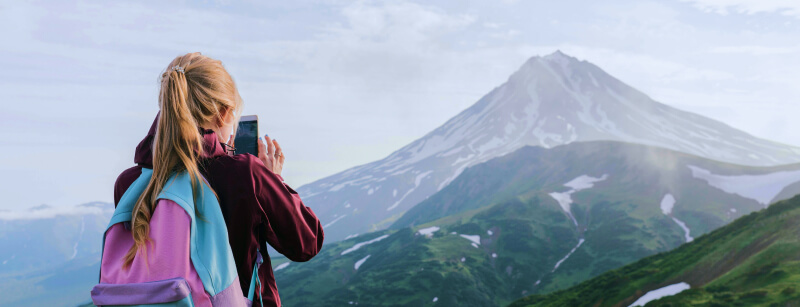
How to Create a Travel Video That Gets Noticed in 2024

What Type Of Travel Content Speaks The Loudest To Travelers?

Social Media Video 101: A Travel Marketer’s Guide

Oscar-Worthy Short-Form Videos in Travel Marketing
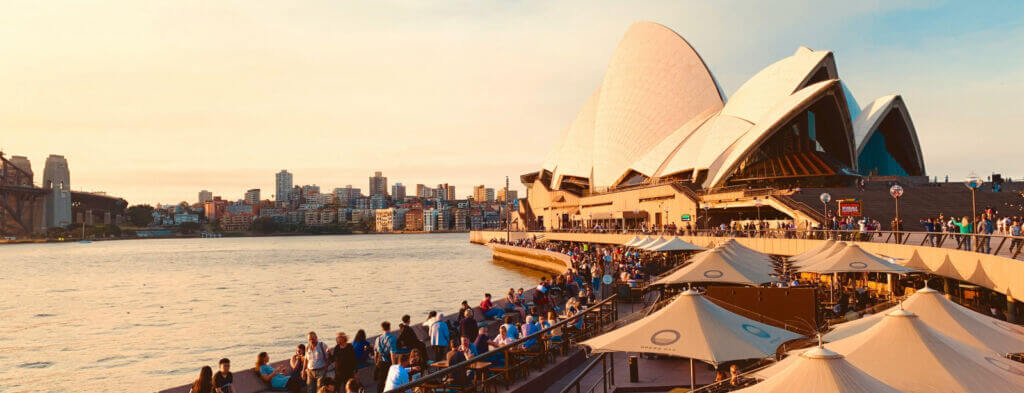
Destination Branding: How To Give Your Destination A Distinct Voice
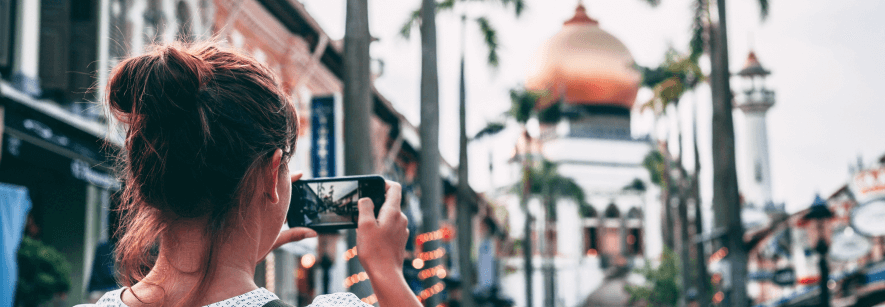
8 Social Media Trends Destination Marketers Need To Know in 2024

2024 Content Calendar Template for Destination Marketers

- Higher Education
- Healthcare & Wellness
- Casinos & Gaming
- Tourism & Attractions
- B2B Technology
- Homebuilders
- Franchise & Retail
- Non-Profit & Social Good
- Insight Reports
- The LT Team
- Careers at LT
- Experience Dynamic
Entertainment & Attractions
The Ultimate Guide to Winning Tourism Marketing Strategies
Unlocking the Potential of Tourism Marketing: Your Ultimate Guide
In the ever-evolving tourism industry, destinations and attractions face the exciting challenge of distinguishing themselves in a world of travel choices. The secret to effective marketing in this dynamic space lies in a blend of creative flair, data-driven strategies, and an intimate understanding of your audience.
Let's journey through the key strategies for triumphant tourism marketing. From pinpointing what makes your destination uniquely appealing to leveraging the influence of modern digital ambassadors, we'll explore how to elevate your destination in the eyes of travelers.
Carving Out Your Unique Space
The first step in successful marketing is grasping what sets your destination apart. It could be New Zealand's breathtaking landscapes, Rome's enchanting history, Thailand's culinary delights, or Miami's vibrant nightlife. Emphasizing these unique aspects is crucial in capturing your audience's attention and drawing them to your destination.
Knowing Your Audience Inside Out
Understanding your target audience requires more than just surface-level insights. It involves delving into their deeper desires, subconscious biases, and the societal influences shaping their views. This deep dive allows us to create marketing strategies that resonate more profoundly. Suppose your audience craves adventure. In that case, we can craft messages highlighting exploration thrills and utilize targeted digital platforms to create immersive experiences that speak directly to their sense of adventure.
Data: The Compass of Destination Marketing
Data is indispensable in steering marketing decisions. Tools like Google Analytics offer rich insights into visitor demographics, preferences, and behaviors. This knowledge allows us to develop targeted strategies that captivate our audience. Analyzing trends and user data enables us to make informed decisions about content creation and resource allocation, leading to more effective and memorable marketing campaigns.
Branding: Crafting Your Destination's Story
Developing a distinct brand identity for your destination sets it apart in a crowded market. Identifying your target audience allows you to tailor your brand messaging effectively. A unique logo, consistent color scheme, and catchy tagline contribute to making your destination memorable. Consistent messaging across all channels solidifies this brand identity while engaging with visitors for feedback ensures your brand remains relevant and resonant.
Partnership: The Power of Collaboration
Successful destination marketing thrives on solid industry partnerships. Collaborating with local hotels, restaurants, and tour operators creates a unified front that enhances visitor experiences and supports the local economy. These partnerships can lead to innovative tourism products and experiences that adapt to changing visitor needs, ensuring the destination's continued growth and success.
Your Website: The Gateway to Discovery
An engaging website is crucial in today's digital world. It should highlight your destination's unique aspects and provide practical information to enhance pre-visit experiences. High-quality images, local culture insights, and visitor testimonials establish a positive reputation and build trust with potential visitors. Interactive features like virtual tours and online booking systems further enrich the user experience, setting your destination apart.
SEO: Enhancing Your Online Footprint
SEO is vital for improving your online visibility. You can increase your search engine rankings by carefully selecting keywords and optimizing your website for mobile and user experience. A well-executed SEO strategy brings your destination closer to potential visitors, attracting more traffic.
Content Marketing: Deepening Visitor Engagement
Strategic content can significantly deepen engagement with potential visitors. Informative posts that offer insider tips and insights can turn your blog into a trusted travel guide. This attracts more visitors to your destination and enhances your brand's credibility.
Experience Marketing: The Power of Authentic Stories
Encouraging visitors to share their experiences on social media can create authentic content that promotes your destination. Offering unique experiences that stand out in the travel market leaves a lasting impression on travelers and encourages them to share their stories, attracting more visitors.
Video and Virtual Reality: Bringing Your Destination to Life
Videos and virtual reality offer immersive ways to showcase your destination. Engaging virtual tours and videos featuring local attractions can transport viewers to your destination, increasing their desire to experience it in person.
Social Media: Connecting with Travelers
Social media is an essential tool for promoting your destination. It allows you to share captivating content and engage with a broad audience, building an active online community that supports your marketing efforts.
Traditional Media: Complementing Digital Strategies
Traditional media remains a valuable component of comprehensive marketing strategies. Combining offline promotions with digital efforts ensures a broader reach and adds depth to your marketing campaign.
Your Journey to Successful Tourism Marketing Begins Here
Are you ready to transform your destination into a top choice for travelers? Dive into these strategies and watch your destination come to life in the hearts and minds of tourists worldwide. For further insights and support in your tourism marketing journey, contact us at LaneTerralever , where we specialize in turning marketing potential into real-world success.
2024 Leisure Consumer Trends Report
How attractions and entertainment destinations must adapt to the visitors of today & tomorrow (consumer research study in partnership with IAAPA).

Continue Reading

Our Presentation at MuseumNext's Growing Audiences Summit 2022

Content Marketing & Content Strategy
LaneTerralever + Blooloop Innovation Session 2021 [VIDEO]

Our Presentation at MuseumNext Digital Summit 2021 [VIDEO]
TourismTiger uses cookies to give you the best possible service. If you continue browsing, you agree to our use of cookies. More details can be found in our privacy policy .
Changing Strategy in Difficult Times: Attracting Local Customers
In the past 6 months, we’ve seen the devastating effects that natural, political, and health disasters can have on the tourism industry. From protests in Hong Kong and Latin America to COVID-19 and the Australian wildfires, I think it’s safe to say it’s been a pretty tough start to 2020.
The tourism industry has lost billions through cancelled flights, cruises, hotels, and tours, and although I hate to say it, this is just the beginning. The businesses which have borne the brunt of these situations are desperately looking for an escape and to get themselves back on track. But the million-dollar question is how?
Although marketing at the moment is an uphill struggle against the media (opens in a new tab) discouraging tourists from carrying out their travel plans. There is a light at the end of the tunnel, for example, Australia is using the situation to their advantage (opens in a new tab) and investing heavily in advertising campaigns, marketing themselves as a safe haven from Coronavirus. What’s the alternative for smaller tour operators?
Coronavirus mania has got people avoiding planes at all costs since they are now being seen as hotbeds for the virus. As a result, those guests you had coming from abroad are most likely cancelling their trips. During the months of political protests in both Chile and Hong Kong, we saw big supermarket chains refusing to open and as a consequence people turned to independent local stores for grocery shopping.
So, as a tour operator why not take the same approach and adapt to the changes in the industry? Instead of tours by locals, think tours for locals.
How to Attract Local Customers
Although more unpredictable, these problematic situations have lots of similarities with low season slumps. Accordingly, we can apply similar tactics (opens in a new tab) to change strategy and adapt to the unexpected. The first step is to reconsider your target audience, who is going to be looking for activities and tours in your area in these situations?
Know Your Market
Two key groups to target in these times are school children and those looking for a staycation.
Schools and governing bodies have expressed growing concern over the anxiety these difficult situations provoke in young children. This opens up a perfect opportunity for tour operators to offer the ideal distraction with tailor-made educational or recreational trips. From neighbourhood tours, where you encourage kids to get to know the local area, to outdoor activities like trekking, these can be a great alternative for teachers struggling to keep their students engaged in these abnormal times. You don’t have to be a professional educational tour company, but definitely check some out (opens in a new tab) for tips.
Alternatively, you could market to those looking for a staycation, people who want to unwind from their stressful lives, but travel or budgetary restrictions prevent them from going abroad. Maybe it’s a frustrated parent struggling to keep their children entertained or a couple looking for a romantic getaway. People don’t always have time to plan due to various distractions, so by providing them with the perfect package, a cosy chalet in the forest or an afternoon of kayaking, you offer up the perfect alternative to the chaotic reality of 2020.
Many of us living in cities have never visited the key tourist sights. Think about it, when you travel to different countries or cities you try to see as much of the city as possible. But why is it that we never visit the sights on our doorstep? Tour operators can create campaigns on encouraging locals to be tourists in their own cities (opens in a new tab) .
No matter who you are marketing to you need to keep one thing in mind: people are anxious and need reassurance. Use an authoritative voice and facts in your content to restore their confidence in getting out of the house and getting involved in tours and activities.
Tips for Attracting Local Customers
Once you’ve decided who you want to market to, you need to adapt your marketing strategy to the local market. Check out the following four essential tips to get you started:
- Local promotions are a tried-and-tested way of bringing in customers from the area and encouraging word-of-mouth recommendations.
- Take advantage of your local media platforms, newspapers, blogs or even contacting local influencers to widen your reach.
- Partner with other local businesses, you are not alone out there! By coming together on a campaign to address people’s anxieties and encourage them to take part in activities you create a more compelling message and again, extend your reach.
- Lastly, a basic point but one which is often overlooked, include your location in your keywords! If people start searching for tours and activities in their area, you need to appear on those searches. Do some research and find some keywords that could work for you. Or if the world of SEO is too intimidating, contact us (opens in a new tab) ! We know the ins and outs of keyword functionality and can provide you with essential, performance-enhancing material.
Local doesn’t necessarily mean your city or 10-mile radius, it can be your state or in small countries, even the whole country. Travel industry specialist Peter Syme has spoken about the high numbers of tour cancellations from tourists travelling to Scotland by plane, but not amongst those arriving by train or car.
What can you take away from this? Don’t be afraid to adjust your strategy! These situations won’t last forever but it could have serious effects on your business if you don’t reassess your target audience for the time being. If you can, stay local. Make the most of people sitting bored at home and wanting a bit of escape from reality. Use your local network and website content to reassure people and let them know you are open for business. Offer them a complete package so the only decision they need to make is when to go. Use it as a challenge to explore different possibilities for your business and make sure you don’t get left behind.
Find this article useful? Enter your details below to receive your FREE copy of 95 Epic Places To List Your Tours and receive regular updates from Tourism Tiger and leading industry experts.
By submitting this form, you agree to Tourism Tiger contacting you via email.
- Name First Last
- Business Type Aerial Playgrounds or Adventures Beach Activities Bike Tours or Rentals Boat Tours Flight Experiences Food Tours Multiday Excursions Nature Tours River Rafting or Canoeing Sightseeing Tours Snow Activities Transport & Transfers Web Design or Software Agency Other
- Country/Region Africa Australia Canada Caribbean China Eastern Europe France Germany Greece Italy Ireland Japan Latin America New Zealand Portugal Scandinavia South East Asia Spain Turkey United Kingdom United States of America Other
- Keep me updated!
This is a short description about myself and what this site is about. I hope you enjoy being here!
Destination marketing in tourism: what brands need to know.
In Blog , marketing .
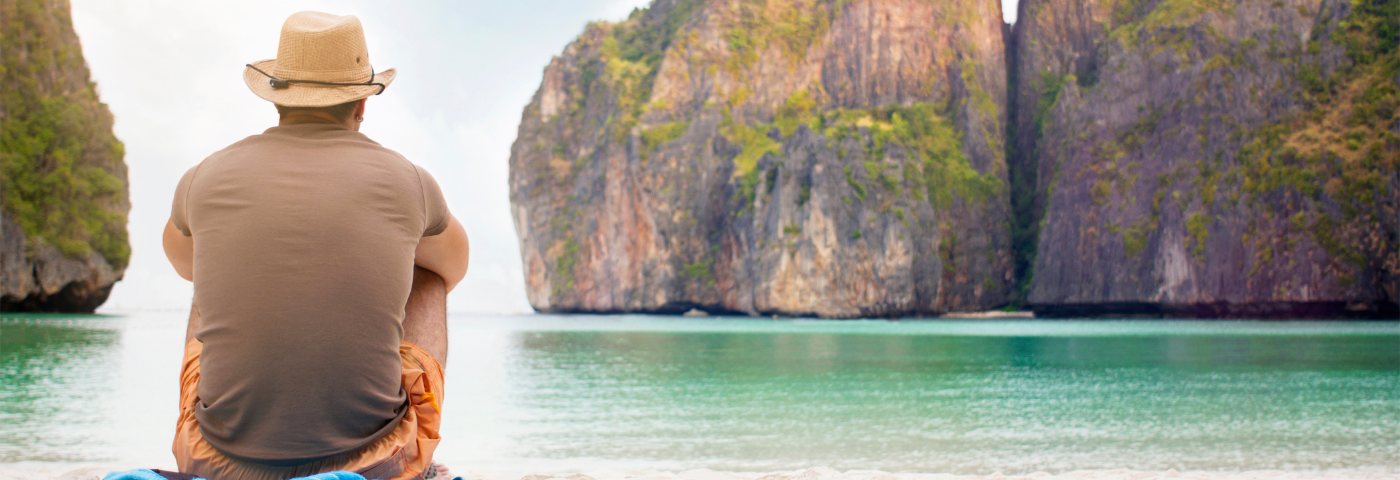
By Tom Mcloughlin, Founder, SEO Travel
When it comes to booking a travel experience, what drives you to visit a new destination? Have you been given a recommendation by a friend? Was the location promoted by a publication or influencer whose judgement you trust? Or have you seen the destination promoted in video ads, on billboards or in print, and been inspired by the captivating visuals and promise of a unique travel experience.
If your answer is the latter, then you’ve had a firsthand experience of the impact of destination marketing.
From promoting an entire country to trying to get more people to visit an unheard-of town or village, destination marketing uses a range of engaging techniques to sell the benefits and features of a location to inspire more people to visit it. This post discusses the use of destination marketing in the tourism industry , explaining how this approach impacts tourism and what brands need to know to make an impression in this sector with their destination marketing campaigns.
What is Destination Marketing?
Destination marketing is a specific approach used by brands in the travel and tourism industry to promote a specific location. Whilst more conventional travel marketing tends to showcase the service or product of a travel company, destination marketing illustrates the features and benefits of a place to get more people to come to it.
The overall aim of destination marketing is to increase customer awareness of a location. By promoting it as a desirable place to visit, the idea is that travellers will think of that destination when they decide to plan a holiday and want to go there. And if it’s a travel company that is promoting a destination, the idea is that the customer will be motivated to book their trip through this brand.
Whilst destination marketing is used by plenty of travel brands as a way of promoting the tours, accommodation or services they offer in specific countries, it’s also a key method of marketing in the tourism industry. Tourist boards and local authorities often rely on destination marketing as a way to promote their town, region or even country with the intention of getting more travellers to visit to boost the local economy and improve their reputation as a holiday destination.
How Does Destination Marketing Impact Tourism?
When used as part of a tourism marketing strategy, destination marketing can have a big impact on how many people visit a location, the kind of travellers that book trips there, and the overall image and reputation of a place.
The goal of this approach is to generate more interest in visiting a location, which increases tourism by bringing more people to an area on holidays and day trips. When done successfully, this can impact a range of factors.
Perhaps the biggest impact that destination marketing has on tourism is that it can massively boost the local economy. Bringing more tourists to an area is better for all kinds of businesses, not just ones providing accommodation and food, and enough growth in popularity also means that there’s the capacity for more businesses to open or expand to meet increasing demand.
Having more people visit a location because of successful destination marketing has the potential to improve its reputation through word of mouth, as if tourists have a good time during their trip they’re likely to recommend a visit to others. This increases interest in a destination further, helping a positive reputation to reach a wider audience and bring in even more tourists.
Destination marketing can also have an impact on the kind of tourism that a location receives, depending on the approach used in marketing campaigns and material. For example, if a destination is advertised as a prime place to visit for outdoor pursuits like hiking or cycling, the majority of the tourists that are going to visit will be interested in these kinds of activities. This means that the location’s most successful attractions and facilities will appeal to this demographic, which may lead local businesses to change their offering to remain relevant.
A more negative impact that destination marketing may have is that it can lead to over-tourism. There are many recorded instances where the popularity of a particular destination has led to environmental damage, locals getting driven out by rising living costs, and overcrowding to the point where the destination gains a negative reputation for being too busy.
This isn’t an issue that many destination marketing companies have to deal with, but it is a potential outcome to bear in mind.
How to Make It Work for Your Brand
Whether you’re a marketing agency working with a tourism board or as part of a travel and tourism marketing campaign, or a travel brand wanting to take a ‘tourism’ angle in your destination marketing approach, here are some of the most important things to remember when it comes to delivering a successful destination marketing campaign.
Find What Makes You Unique
When you’re marketing a destination with the aim of attracting more visitors, what’s going to have the biggest pull is the appeal of a unique attraction or experience. Therefore, all of your destination marketing content should revolve around this unique selling point so that you have the best chance of standing out against competitive destinations.
The more specific your destination, the easier it will be to draw out a unique quality. When marketing a country or a region to increase tourism this can be harder, so instead of trying to identify an attraction or feature that stands out, think about advertising a unique travel experience that the location can provide.
Build your entire destination marketing campaign around this unique selling point, even if it’s not that explicit in some approaches. It will help to deliver a much more cohesive campaign overall and ensure that your location sticks in potential visitors’ minds .

Choose a Traveller Demographic
Any kind of marketing campaign works best when you have a specific audience in mind. Advertising a location is no different.
Whilst you may think that promoting a location as part of tourism efforts should try and target as many potential visitors as possible, it also means that a lot of your marketing efforts are going to be quite vague as they try to appeal to numerous different groups. Sure, you’ll still get a reasonable response from some people that are engaged by your promotion of the place, but conversion rates tend to be lower when you don’t have a specific demographic in mind.
After you’ve identified what it is that makes your destination unique, establish the kind of traveller to whom this unique factor is going to appeal. You should create profiles for typical people within this demographic, detailing the kinds of travel experiences they enjoy, their pain points when visiting new destinations, and any particular content formats or marketing techniques they respond well to or frequently engage with.
Once you have this target audience in mind, try and shape your destination marketing around them. You may be appealing to a smaller group, but you’re likely to get a much higher percentage of them to engage with what you’re sharing.
Make it Personal
One of the most effective techniques you can use in a destination marketing campaign is using a personal hook to make your content more engaging.
This is particularly useful when you’re simply promoting a location, as your main intention is to get your target audience to start picturing themselves there so that they develop the desire to visit. It’s much easier for them to do this when you present a personal, relatable experience with your content, be that in text, video or audio format.
One of the simplest ways to make destination marketing personal is to capture real people experiencing the location, focusing on finding the best ways to present different sensory elements. Video is one of the best formats to do this, especially when you create content with lots of stunning visual elements that elicits an emotional response.
Getting local people to tell stories about a destination is also a brilliant technique for making your destination marketing content more personal, which also works really well in a written or audio format. This also allows you to share exclusive insight into a place, giving a more authentic feel to your marketing material.
Recognise Trends, but Think Long-Term
The popularity of plenty of destinations is affected by travel trends. Whether your destination offers a desirable climate, activity or cultural experience, responding to trends to capture audience interest as it peaks can seem like the ideal marketing strategy.
The thing to remember with trends however is that they don’t often last for long. Your destination may be all the rage for a single season, but hype often quickly dies down as travellers find something new to get excited about, meaning that what was once ‘trendy’ about your location may not stay that way for long.
Acknowledging and capitalising on trends as part of your destination marketing campaign is a good idea, but it’s important not to put all of your eggs in this brand new basket and keep long-term planning in mind as well. The last thing you want is to splurge all your resources on an approach that’s only going to be relevant for a few months. So use more instant channels like social media and email to respond to trends, and ensure that things like written and video content and advertisements are more evergreen.
Utilise Reputation and Association
Influencer marketing is an incredibly useful approach to include in your destination marketing strategy if possible. A key objective for destination marketing companies is to increase awareness of a location, and having an affiliation with a well-known figure can have a really positive impact on this.
The more famous or recognized the person you work with is, the more attention your marketing campaigns are going to get. But whilst we’d all like to dream of partnering with an A-list celebrity to promote our target destination, this probably won’t be a reality for most brands, which is where working with influencers comes in.
Whether they’re known for their presence on social media, in print or on a video channel like YouTube, we recommend working with either a travel influencer or someone who has a following that overlaps with the demographic you’re trying to appeal to. Having your destination endorsed and associated with someone that already has a trusted reputation will bring positive associations to your location and increase the reach of your promotional material.

Deliver What You’re Advertising
This last piece of advice might seem obvious, but it’s very important not to oversell your target location in any of your marketing material. You’re obviously going to promote the best version of your destination to catch as much attention as possible, but when people do actually visit you need to ensure that they’ll experience what they were promised.
If the place you advertise is nothing like the place visitors arrive, your destination marketing campaign is quickly going to stop bringing in any kind of tourism. It’s okay to romanticise and glamourise aspects to engage your target audience, but ensure that you’re promising an experience that you can deliver on if you want word to spread about your location in a positive way.
Whilst destination marketing was initially just associated with tourist boards and adverts for different countries, it’s an approach that has been used by a wide variety of travel brands as a new way to reach customers and subtly promote their services. It’s still important to understand the best practices and the potential impact if you’re using destination marketing in tourism to help raise awareness and improve the image of a location, and we recommend you check out our other posts in the destination marketing series if you’re looking for more information and inspiration.
If you need more information or help with your travel marketing strategy or want to find out more about approaches like destination marketing, get in touch with SEO Travel for a chat and to find out more about the range of marketing services that we offer.

Share this:
Leave a comment cancel reply.
Your email address will not be published. Required fields are marked *


How to Attract More Tourists: A Quick Guide for Tourism Marketers
by Bryan Reynolds | Nov 29, 2023 | Destination Marketing
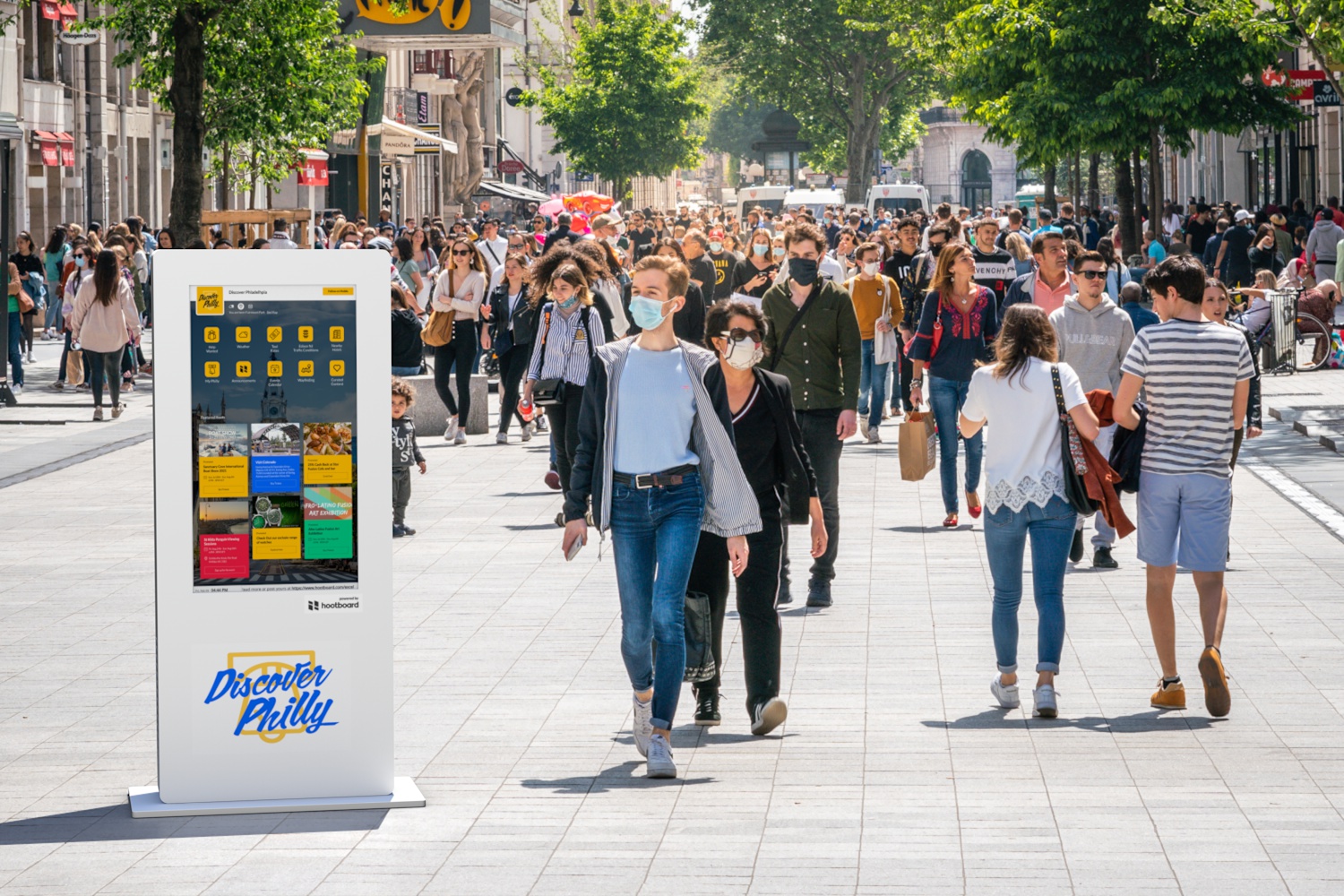
The travel and tourism industry is constantly evolving, and attracting tourists is a task that requires strategic planning and effective marketing strategies. The goal is not just to attract international tourists but also to attract local tourists who contribute significantly to the local economy. This blog post will provide a detailed guide on how to attract more tourists to your tourist destination, whether they are domestic tourists or from abroad.
Understanding Your Target Market to Attract Tourists
The first step in any marketing strategy is understanding your target market. In the context of the tourism industry, your target audience can be domestic tourists, international tourists, or both. Understanding their preferences, needs, and behaviors is crucial for designing an effective marketing campaign. It’s also essential to work closely with the local tourism board and local businesses to understand the local market better and develop strategies that will attract visitors and benefit the local community.

Enhancing Your Online Presence
- Use SEO to improve your visibility on search engines
- Have a mobile-friendly, user-friendly website
- Regularly update your own website with new tours, cultural activities, and seasonal promotions
- Engage with users on social media platforms and encourage user-generated content
In today’s digital age, having a strong online presence is vital. Most potential visitors begin their travel planning online, making search engine optimization (SEO) an essential part of your marketing efforts. A well-designed website with user-friendly navigation and detailed information about your tourist attractions can make a significant difference. Additionally, utilizing social media platforms and channels can help you reach a wider audience, engage with your potential customers, and create an engaged audience.

Leveraging Local Attractions and Local Community Experiences
- Collaborate with local businesses and tour operators
- Offer guided tours and discounted tickets
- Promote local cultural activities and experiences
One of the most effective ways to attract tourists is by promoting local attractions and experiences. Whether it’s historical sites, natural beauty, cultural experiences, or entertainment venues, these are the main attractions that draw tourists. Collaborate with local businesses, like local hotels and tour operators, to offer guided tours, discounted tickets, or even free tours to these attractions. This not only attracts tourists but also supports the local businesses and community.

Utilizing Reviews and Testimonials
- Encourage visitors to leave online reviews
- Share positive reviews on your social media channels and website
- Use the feedback to improve your services and offerings
Online reviews and testimonials play a crucial role in the decision-making process of potential guests. Positive reviews on your website or social media channels can significantly influence potential visitors’ perception of your tourist destination. Encourage visitors to leave reviews and share their experiences. This not only helps attract more tourists but also provides valuable feedback for further improving your services and offerings.

Offering Virtual Experiences
With the rise of virtual experiences in the tourism industry, offering a virtual tour of your tourist attractions can be a great way to attract tourists. This allows potential visitors to explore your destination from the comfort of their homes and can pique their interest to visit in person.
- Offer a virtual tour of your tourist attractions
- Use high-quality visuals and detailed information to create an immersive experience

Integrating Digital Signage and Kiosks
- Deploy digital signage at key locations for directional assistance and information
- Use interactive kiosks for self-service ticketing, reducing wait times
- Integrate AR features for an enhanced, immersive experience
- Use digital displays for real-time updates and alerts, like weather conditions or event schedules
- Use digital signage for promotional content, highlighting local attractions and special offers
Digital signage and interactive kiosks for tourism can significantly enhance the tourist experience by providing readily accessible information and services. These technologies serve as interactive guides, providing tourists with directions, exhibit information, historical facts, or even restaurant recommendations, all at their fingertips. They can also be integrated with augmented reality (AR) features for a more immersive experience, letting tourists virtually explore attractions before visiting them in person.
This integration ultimately aids in delivering a seamless and personalized tourist experience, fostering better engagement, and promoting longer stays.
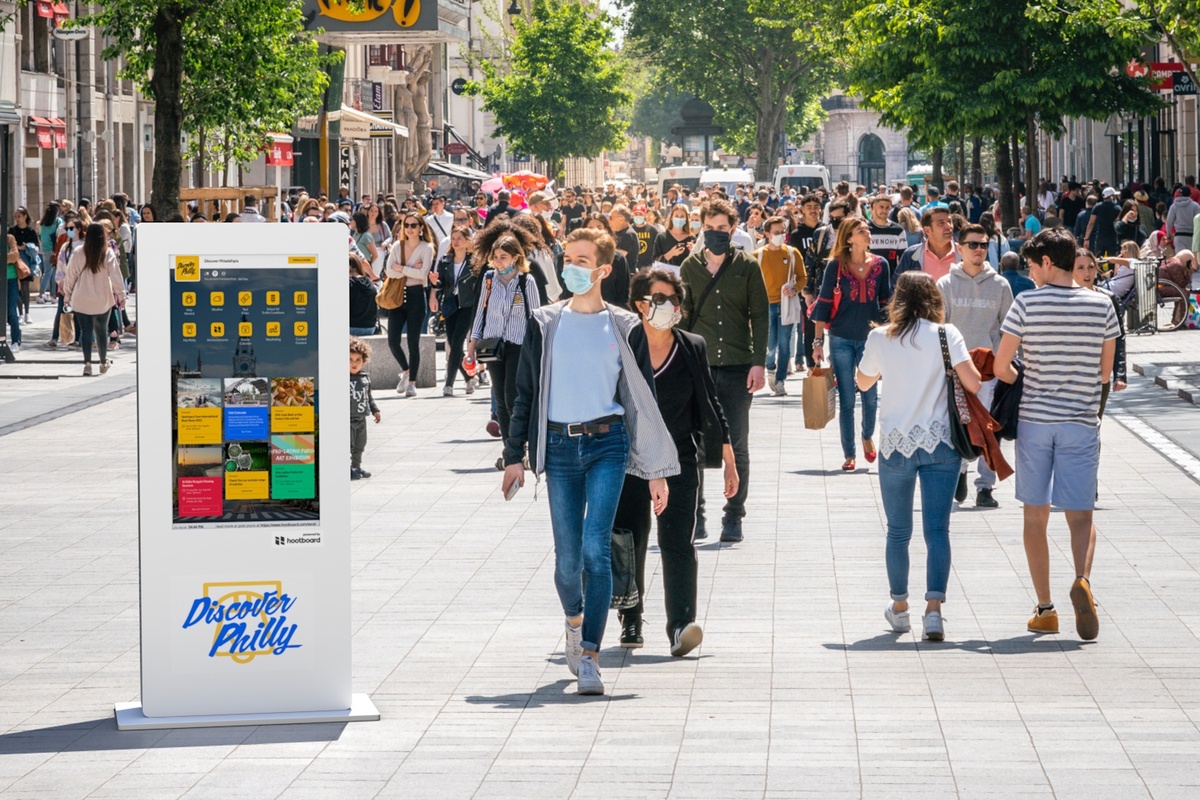
Attract More Tourists to Your Location with HootBoard
Attracting tourists requires a comprehensive marketing strategy that understands the target audience, leverages the power of the digital age, promotes local attractions, utilizes online reviews, and offers innovative experiences like virtual tours. By following these strategies, tourism marketers can effectively promote their tourist destination, write a powerful tourism business plan , attract more tourists, both international and domestic, and contribute to the growth of the local tourism industry.
- Company Updates
- Customer Spotlight
- Destination Marketing
- Digital Signage
- Employee Engagement
- Internal Communications
- New Features
- Newsletters
- Product Updates
- Touch Kiosks
- Visitor Information
Recent Posts
The 9 best free templates for digital signage, how to turn a tv into digital signage, grow digital kiosk and signage engagement with hootboard os.
- Free Events Calendar Template for a Website
- Office Facility Space Management Ideas
- Knowledge Base
- Setup a Demo
- Privacy Policy
- Terms of Use
Related Posts
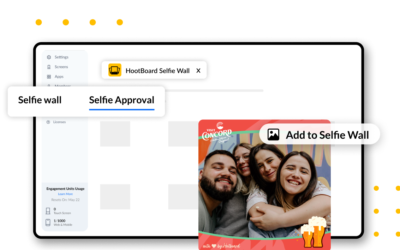
by Bryan Reynolds | Templates
In my career as a digital signage and software industry veteran, I've had the opportunity to explore a myriad of...
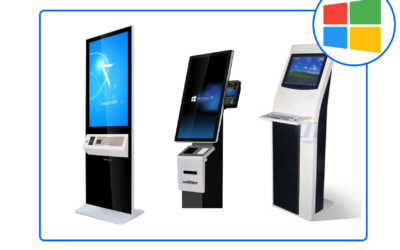
by Bryan Reynolds | Digital Signage , Touch Kiosks
Turning a regular smart TV into digital signage can be a game-changer for your business or project. Digital signage...

Delivering information effectively and engagingly is more important than ever. Whether you're in travel & tourism,...
Thank you! Your Download Should Begin Automatically.
Email Address
Organisation
Phone Number
Industry Industry Travel & Tourism Smart City Education Workplaces Industry Agnostic Others
- Kalibrate Global
- Location-based marketing content
Using location-based marketing to attract tourists

August 24, 2023 | 4 minutes
In today’s digital age, location-based marketing has become a game-changer for businesses seeking to attract customers to their locations. In the past, it was nearly impossible to collect and analyze data on customers who weren’t regularly visiting, but by utilizing mass mobile data, retailers can now optimize their digital marketing strategy and draw travelers to their destination.
Harnessing massive mobile data
Mobile devices have revolutionized the way we interact with the world, and their ubiquity has paved the way for innovative marketing strategies. Mass mobile data, which includes anonymized information about users’ movements and behaviors, can provide invaluable insights into the tourists visiting you r location and surrounding areas. By analyzing this data, you can identify peak visiting times, popular routes, preferred attractions, and conduct demographic and lifestyle-based consumer profiling. This data-driven approach allows you to tailor your marketing efforts and location strategy to align with tourists’ preferences, enabling more targeted and effective campaigns.
Customer profiles
Creating detailed customer profiles is the cornerstone of successful location-based marketing. By understanding your target audience’s demographics, interests, and preferences, you can tailor your messages to resonate with them on a personal level. To attract tourists, consider factors such as age groups, travel motivations (adventure, relaxation, culture), and spending habits. Businesses that invest in building a robust customer profile see that investment return several times over. Profiles serve as the basis for:
- Predictive prospect models to help you identify which tourist s are most likely to become customers
- Understanding where tourists stay, visit, avoid, and the value they could represent for your brand
- Strategic marketing decisions, including channel selection and resource allocation
With a well-defined customer profile, you can curate content and offers that tap into tourists’ desires, increasing the likelihood of capturing their attention and interest.
Identifying Trade Areas
A trade area is a geographical zone that encompasses your business’s primary target audience. For tourist-focused businesses, this area might include travel hotspots, a strip of hotels, and areas with lots of traffic to get to certain destinations. Identifying these trade areas helps you understand where to concentrate your marketing efforts and location strategy.
Creating a location-based digital marketing strategy
Now that you have the foundational elements, it’s time to craft a comprehensive location-based digital marketing strategy:
Geotargeted campaigns:
Use geotargeting to deliver location-specific content and promotions to users when they are in or near your destination or your competitor’s . For example, offer exclusive discounts or tour information to visitors who are within a certain radius of your attractions.
Personalized recommendations:
Utilize customer profiles to provide personalized recommendations based on travelers’ preferences. This could include suggesting activities, restaurants, or events that align with their interests, creating a more memorable experience.
User-generated content:
Encourage tourists to share their experiences on social media using location-specific hashtags. User-generated content not only provides authentic endorsements but also expands your reach to potential visitors who are influenced by peer recommendations.
Use conversion zones
Conversion zones are geofences built around your locations. Some ad types support conversion zone tracking, where devices you’ve served an ad to can be counted when they visit you r location. No, you can’t identify those customers individually, but conversion zones are a key KPI and an indicator of foot traffic captured in response to your ad.
Data analysis and iteration:
Regularly analyze the performance of your location-based campaigns. Monitor engagement, click-through rates, and conversions to refine your strategies over time. Data-driven insights allow you to make informed adjustments and ensure the effectiveness of your marketing efforts.
In the realm of tourism, location-based marketing has emerged as a powerful tool to attract and engage travelers. By leveraging mass mobile data, crafting customer profiles, and identifying trade areas, you can develop a location-based digital marketing strategy that speaks directly to your target audience. As tourists increasingly rely on their mobile devices for travel planning, embracing these techniques can help your business stand out in a competitive market and create unforgettable experiences for visitors.
Learn more about acquiring customers
Found this interesting? Why not share it:
Read more articles about:
Subscribe and get the latest updates
You may unsubscribe from our mailing list at any time. To understand how and why we process your data, please see our Privacy & Cookies Policy
Related resources
Location intelligence, medtail’s march to a multi-unit future hits a snag.
In recent years, healthcare and retail have increasingly intertwined in a trend dubbed "medtail." And while investors...

Fuel pricing
The kalibrate fuel round up: april 2024.
In this monthly feature, we look across the industry and mainstream news to uncover some stories of note that we...

The Kalibrate retail round-up: April 2024

Start your journey to more informed decisions today
We use cookies to improve user experience, and analyze website traffic. For these reasons, we may share your site usage data with our analytics partners. By clicking "Accept", you consent to store on your device all the technologies described in our Privacy Policy . These can be managed and changed on an individual basis at any time, from 'Cookie Preferences' in your browser settings.
Tourism Marketing Is Evolving Quickly With These New Priorities
Lebawit Lily Girma , Skift
November 3rd, 2021 at 12:15 PM EDT
Developing more innovative and stable sources of funding remains critical for this important, expanded destination management role to succeed. Some DMOs are on it, but many more continue to rely primarily on hotel bed taxes. Is the rapid return of travel dampening the sense of urgency?
Lebawit Lily Girma
During the spring of 2020, destination marketing organizations (DMO) saw their primary and often sole source of revenue vanish along with travelers, all while their roles ballooned from becoming a primary safety information hub to advocating for funding, embracing destination stewardship and forging new relationships with residents, government and businesses.
Close to two years later, new data further cements what destination leaders have been sharing with Skift over the past year — that the transformed and expanded tourism board model is here to stay. Over 76 percent of U.S. tourism boards rank destination management among their top five key responsibilities, according to a newly released 2021 Funding Futures survey and report by strategic marketing firm Miles Partnership, in collaboration with Civitas, Tourism Economics, and Destination Analysts. The report will release in full later today, but results were announced in a webinar on Tuesday.
The survey is an update of an earlier 2020 report and analyzes responses from 80 U.S. DMOs, 21 U.S. state tourism offices and four Canadian tourism boards, with updated data and recommendations for DMOs in a post-pandemic world in which tourism is back yet changed.
U.S. tourism marketing offices also confirmed the three key areas where their roles have increased as compared to 2020: 1) engaging and aligning with key partners in private and public sectors, such as governments and economic development entities, 2) improving tourism by focusing on sustainability and resident engagement, and 3) making a greater commitment to DEI.
And yet efforts to develop new sources of stable funding appear to lag — just 34 percent of tourism boards indicated they were working on this or have done so, against 25 percent of their Canadian counterparts.
“It’s encouraging to see in the Future Funding report that more and more destination organizations are developing new funding sources, but there is more work to be done,” said Don Welsh, CEO of Destinations International , a DMO member organization. “We believe destination organizations should not be fully dependent on just one funding source, but instead diversify funding with a mix of public and private investments.”
U.S. destinations have been recouping on their hotel bed taxes since vaccinations reopened the door for wider travel, but their Canadian counterparts continue to rely primarily on government support.
Understandably, on the U.S. side there’s optimism about 2022 budgets, with 61.8 percent of tourism boards saying their budget for next year will increase. Over half also indicated that they are working on building up a reserve fund with up to six months of operating budget, while a quarter are working on a full year’s reserve and about 10 percent are building up reserves worth two years of operating budget.
A Record Number of Tourism Improvement Districts in 2022
The top five funding sources at this time for U.S. tourism boards show the hotel bed tax in first place as a primary source, followed by Covid recovery funds, sponsorships, membership fees and advertising revenue, according to the 2021 Funding Futures survey. Government recovery funds dominated for Canada’s tourism boards.
In the U.S., a significant portion of destinations – up to 40 percent – indicated pursuing the tourism improvement district (TID) as a new sustainable source of funding, one which was recommended in the first Funding Futures report.
Looking at a sample size of 100 cities, 29 with TID mechanisms and consulting data on hotel performance by city, Tourism Economics said it showed that the cities with this funding tourism improvement district allocation outperformed their peers.
“Once this increase in funding takes place, a change of performance also takes place in that city relative to its competitive set,” said Adam Sacks, CEO of Tourism Economics, at the launch of the Funding Futures report. On average, TIDs produce a 4.5 percent lift in hotel room revenue, Saks added.
Looking at the U.S., tourism boards in at least a dozen states are currently pushing for TID legislation by 2022, including New York, Utah, Arizona and Illinois, among others. Three destinations — Virginia, Louisiana and Massachusetts — received TID legislation approval in 2021.
“The year of 2022 in my estimation may be the year of TIDs in the Midwest” said John Lambeth, CEO of Civitas, at the launch. “This is adding a new, very stable dedicated source of funding as another tool in our toolkit as something else that’s available to DMOs to provide increased supplemental funding.”
“Destination organizations that engage meaningfully with their communities are in the best position to find funding from traditional and nontraditional stakeholders,” said Destinations International’s Welsh. “We call this the Community Benefit Funding Model .”
Top Three Investment Priorities: Industry Partnerships, Community and Destination Planning
As tourism returned, doubts lingered as to whether tourism boards would keep prioritizing their residents and continue to market to them. At Skift Global Forum, leaders of California and Florida tourism indicated that the shift was here to stay, and that they would continue to market to their insiders as local marketing campaigns had been well received with pent up desire from locals to explore their backyard and support their homegrown businesses.
Indeed, in ranking their investment priorities for the next two years, a whopping 67.4 percent of U.S. tourism boards said they plan to engage more closely with residents and community groups — second on the list after engaging more closely with businesses and industry partners. Up to 40.4 percent also said they would invest in conducting or updating resident sentiment research as a fourth priority, after developing or updating its destination master plan. DEI programs ranked fifth, with 37.1 percent planning to invest in those over the next two years, against 38 percent state tourism offices.
Just 12 percent of U.S. DMOs said they would invest in supporting sustainability initiatives in their destination.
Leading on Sustainable Tourism
Four ways in which the Futures Funding report recommends DMOs can take leadership in the sustainable tourism and regenerative tourism areas include: sustainable travel messaging, levying higher hotel or other taxes on the kind of tourism that has more impact such as daytripping, destination management and regenerative projects.
In 2020, tourism boards focused on proving their value as a key player supporting the visitor economy and communicating tourism’s contribution to the destination’s quality of life.
That push and the pandemic has helped cement tourism boards’ status as a central “all about the destination” place to consult and plan how to explore responsibly and safely.
“Starting in the Spring of this year, website activity on DMO sites was higher than 2019 in every single month and every single week,” said Saks. “So clearly travelers are going to DMOs as a means of planning and booking their trips.”
DMOs’ reponses in the Funding Futures survey also show a commitment to continuing to build relationships with their host communities for a more resilient industry on the other side of Covid. Over 80 percent of U.S. tourism boards surveyed agree that their organization “will have a central role in improving tourism more on sustainability, resident and local business engagement,” with a 100 percent response rate from Canada’s four responding tourism boards.
The commitment to DEI is also greater, with 76 percent of DMOs in the U.S. and 75 percent of those surveyed in Canada stating “we are investing in a greater commitment to Diversity, Equity and Inclusion (e.g., training, staffing, working with partners and community groups).”
“But where help may still be needed is in moving forward the development of new and more sustainable sources of funding,” said Erin-Francis Cummings, CEO of Destination Analysts.
Key DMO Recommendations
The 2021 Funding Futures report makes four recommendations for DMOs: to track funding available to tourism from various government mechanisms including through the Economic Development Administration, to manage future risks in funding, to stay tuned to resident industry and political sentiment, and to create or update the destination’s master or sustainable tourism plan.
The recommendations align quite a bit with the findings of a recent report out of the UK examining the new role and performance of the country’s tourism boards.
It’s clear from the data that the expanded role of tourism boards are here to stay — an average of 11 responsibilities for Canadian marketing offices and eight for those in the U.S. The question remains whether a larger number will also prioritize diversifying funding or whether they will fall into the lure of the returning deep pocketed international visitor in 2022.
UPDATED: This story has been updated with comments from Destinations International.
The Daily Newsletter
Our daily coverage of the global travel industry. Written by editors and analysts from across Skift’s brands.
Have a confidential tip for Skift? Get in touch
Tags: coronavirus recovery , destination marketing organizations , dmos , tourism boards
Photo credit: Panoramic view of Cannon Beach in Oregon Courtesy of U.S. Department of State / Flickr Commons

« View All Posts
What are Top Digital Marketing Strategies to Promote Tourism Destinations?
November 10th, 2022 | 4 min. read
By Julia Elliott

People everywhere are itching to get out of town. Domestic travel is thriving, the U.S. Travel Association says; in fact, it's back at pre-pandemic levels.
That's the good news. The challenge is that many getaways are beckoning folks to pack their suitcases. What's the best way to stand out and convince travelers to book a trip to your destination?
At Zoe Marketing & Communications, we've helped tourism bureaus get their message to the right audiences — especially the desirable family market — for 35+ years with our sister media companies, Metro Parent in metro Detroit and Chicago Parent .
In this blog, we'll highlight several proven digital marketing strategies and insights:
Segment your audience and find out who "owns" them
Consistency is key; seasonality is huge
Digital ads on the general web + social media
Emails that plant seeds + push decisions, content marketing for longer-term seo.
By the end, you'll have a solid roadmap (or reminder!) of how to invest your digital marketing dollars best to move forward with confidence.
Segment your audience and find out who 'owns' them
Where does your ideal traveler live? Start here. Consider factors such as:
Are they flying to you?
Are they driving to you?
Do they live close to you or farther away?
Do they have a certain income?
What are their interests/hobbies?
Are they single/coupled?
Do they have kids?
Next, consider: Who "owns" this audience? For example, is there a niche publication or influencers that really know this market? Advertising on content creators' websites might be a good alignment.
Marketing agencies can also help you get in front of your target audience, especially with opt-in email subscribers, digital ads and other tactics (more on those below).
When do people visit your destination? When do they think about visiting your destination? How long does it typically take them to book a reservation?
The answer for a balmy lakefront beach town will differ from a snowy skiing haven — and be miles from a year-round resort that isn't as dependent on the weather. A mini checklist:
Determine your "key times." Marketing may be more robust in some months; dialed back in others.
Consider both your "pre-planners" and your "last-minuters." People usually need time to plan and save; they can also sometimes splurge.
Launch campaigns at least 1-2 quarters before any given season, to build excitement.
Think of marketing as a year-round effort. Always keep a steady "drip" going.
Digital ads are a strong strategy for tourism. There are many choices, but it comes down to being strategic about who you're trying to reach — and testing it.
Here are a few digital ad methods worth trying.
1. Search engine marketing (SEM) ads
Search engines like Google Ads and Bing Ads offer various options to get your ads in front of the right audience. It's all based on what people are searching for. If it aligns with what you're offering, you can serve up these types of ads to them:
Search (text-only ads)
Display (image-based ads)
Video (ads most often shown on YouTube)
Local (ads that appear Google Business Profile results)
You can also narrow in on your ideal geographic regions and interests, including:
Location: filters by state, ZIP code, city, metro area, etc.
Radius: a set number of miles around your location
Affinity segments: targets people by search interests ("vacation," "travel," etc.)
Demographics: sorts by age, household income and other data
2. SEM retargeting campaigns
What if someone clicks your ad, looks at your site and clicks away? Super common, right? People don't typically book a trip on the spot like that. So you want to remind them you exist.
The best way to do this is with retargeting ad campaigns . By placing a piece of code called a "pixel" on the page, you can later serve "reminder" ads to these folks. Those follow them around as they browse other sites and apps.
It's a savvy method because you're targeting people who've actually shown interest in you.
3. Social media ads
Finally, grab eyeballs where they're cruising most often: social media. Facebook and Instagram in particular draw high traffic. And, since they're both run by Meta, posting ads to both is easy.
As with SEM, you can target people by geography and interests on social, such as:
People who like similar travel destinations
People interested in activities at your destination (skiing, hiking, sailing, etc.)
People interested in events and things to do
Parents of kids of specific ages (if applicable)
Of course, remember to schedule organic content for your followers, too. Your posts, Reels and Stories are good ways to showcase what's happening at your destination now — and soon.
Email marketing offers a powerful combination. You can give people the idea to visit you. And you can include a direct call to action to explore your website and hopefully plan a trip.
Inboxes are high-visibility places to connect with key travelers (chew on this: millennials spend over 6 hours a day checking their email!). Work two angles here:
Paid email lists
Put your message in front of hungry prospective travelers. Teaming up with a media partner is one choice, if they allow you to reach their audience via email.
A more common option is connecting with a marketing agency with access to opt-in subscriber lists. In these cases — as with social media — you can target the interests, demographics and geography that best match the audience you're trying to reach. Consider:
Display emails. These have a strong image, minimal copy and a clear call to action.
A-B testing subject lines for your emails. Which one entices more opens?
Creating a series of emails. You can send strategic follow-up emails to people who opened your emails but didn't click anything, and those who didn't open them at all.
Your email lists
Of course, you also have free, direct access to those who've signed up for your enewsletter, if you have one. Use it to your advantage, showcasing upcoming events, seasons and specials.
These emails can (and should) be a bit more conversational and "familiar" than paid emails. That's because you're reaching folks you already have a relationship with.
Finally, blogs and articles can boost your organic web search volumes over time.
Publish pieces to your website that give the 101 on what's outstanding about your destination. Aim to inform, educate and — most of all — answer common questions. Plus, aim for quality, consistency (at least monthly) and substance (600 words per article, at least).
After time, once you have enough content, pooling it into a pillar page is another excellent way to let Google know you're the definitive source for your destination.
Remember, though, that this content requires a dedicated in-house or hired writer.
What are the next steps to marketing my tourist destination?
Marketing your tourism destination takes a multi-pronged approach. As we explored, knowing your audience is big. Consistency is key. And digital ads, emails and content can all help.
As you might have guessed, only one approach won't do the job well. Your tactics should work in tandem. A professional marketing agency can help map your visitors' "buyer's journey " — before they book their actual journey.
Looking for some guidance? Talk to your advisor at Zoe Marketing & Communications. We'll pull from our 35+ years of experience marketing travel destinations, especially to the family market.
In the meantime, keep exploring your options! Discover our top two next-step articles for tourism marketing:
Why marketing to families is important for destinations like yours
Tips on setting a budget for a digital marketing campaign
Julia Elliott
For 17 years, Julia Elliott crafted strategies and stories for Zoe, along with its sister companies, Metro Parent and Chicago Parent. A deep background in journalism helped her create customized content marketing to drive client success.
Don't forget to share this post:
Related Articles
What is a utm code and how does it help marketing campaigns.
March 28th, 2024 | 4 min. read
5 Disadvantages of Word of Mouth Advertising (If It’s All You’re Doing)
March 26th, 2024 | 4 min. read
5 Best Digital Marketing Agencies in the Chicago Suburbs (Illinois)
March 12th, 2024 | 3 min. read
9 Best Digital Marketing Agencies in the City of Chicago
February 28th, 2024 | 5 min. read
The 2024 Education Essential Marketing Campaign in Metro Detroit and Chicago
August 1st, 2023 | 5 min. read
Top Tactics for a Full-Funnel Marketing Strategy
April 13th, 2023 | 5 min. read
7 Reasons Why Your Digital Ads Aren’t Converting
April 6th, 2023 | 5 min. read
5 Key Insights on How Conversion Marketing Works
March 30th, 2023 | 4 min. read
8 Ways to Improve Conversion Rates With Your Marketing
March 28th, 2023 | 4 min. read
The 10 Advantages and Disadvantages of Chatbots as a Website Marketing Tactic
February 21st, 2023 | 4 min. read
The 11 Best Features of a Good Website (+ 1 Bonus)
February 14th, 2023 | 6 min. read
5 Key Things You Should Do After Lead Generation
February 7th, 2023 | 6 min. read
Why is Multichannel Marketing, or ‘Layering’ Tactics, Important?
January 17th, 2023 | 5 min. read
What is Targeted Email Marketing and How Does It Work?
January 12th, 2023 | 6 min. read
7 Ways to Reduce the Bounce Rate from Your Landing Page
December 13th, 2022 | 5 min. read
6 Different Types of Conversions in Digital Marketing
December 8th, 2022 | 4 min. read
Are Digital Ads Worth It for My Marketing Strategy?
December 6th, 2022 | 4 min. read
The Benefits of Social Media Ads and Differences Among 7 Key Platforms
November 29th, 2022 | 10 min. read
What Search Engine Marketing (SEM) is and How It Works
November 23rd, 2022 | 5 min. read
Why Good Images are Important for Ads — And How to Make Yours Better
November 15th, 2022 | 5 min. read
5 Top Digital Marketing Strategies to Promote Theater Arts
November 8th, 2022 | 4 min. read
What are Top Digital Marketing Strategies for Museums?
November 3rd, 2022 | 4 min. read
Why Marketing to Families for Cultural Institutions is Important
November 1st, 2022 | 3 min. read
Good Landing Pages to Send People to From Ads
October 4th, 2022 | 5 min. read
Digital Marketing in Tourism
- Living reference work entry
- First Online: 04 December 2021
- Cite this living reference work entry

- Christian Maurer 5
515 Accesses
3 Citations
Information and communication technologies have contributed significantly to the development and growth of the tourism industry. Tourists use the Internet in all phases of the customer journey. In 2020, the typical user spent on average 6 h and 43 min online each day, which was about 40% of their waking life. Mobile devices account for more than half of all the online time, but most Internet users still use a combination of mobiles and computers to access the Internet. Therefore, digital marketing offers great opportunities for tourism organizations and suppliers to promote and sell their offers and to establish long-lasting relationship with their customers. This chapter discusses the development of digital marketing in tourism and illustrates the evolution over various steps. A brief history of the development of digital marketing for tourism businesses and an outline of its benefits and challenges will be provided. This chapter focuses on website publishing, traffic building, and digital marketing campaign planning. Challenges and future developments of digital marketing conclude this chapter.
This is a preview of subscription content, log in via an institution to check access.
Access this chapter
Institutional subscriptions
Andrews M, Luo X, Fang Z, Ghose A (2015) Mobile ad effectiveness: Hyper-contextual targeting with crowdedness. Market Sci 35(2):218–233
Article Google Scholar
Batra R, Keller KL (2016) Integrating marketing communications: new findings, new lessons and new ideas. J Market 90:122–145
Berger S, Lehmann H, Lehner F (2001) Location-based services in the tourist industry. Inf Technol Tour 5(4):243–256
Buhalis D (2003) eTourism. Information technology for strategic tourism management
Google Scholar
Buhalis D, Foerste M (2015) SoCoMo marketing for travel and tourism: Empowering co-creation of value. J Destination Market Manage 4:151–161
Chaffey D, Smith PR (2017) Digital marketing excellence. Planning, optimizing and integrating online marketing. Routledge
Charlesworth A (2014) Digital marketing. A practical approach. Elsevier
Book Google Scholar
Chung J, Buhalis D (2008) Information needs in online social networks. Inf Technol Tour 10:267–281
Czernik T, Fuchs M, Höpken W (2008) Test market studies for email-marketing: an alpine hotel case study. In: 4 th International conference: an enterprise odyssey: tourism, governance, and entrepreneurship, University of Zagreb, Faculty of Economics, June, 2008 / [ed] Galetić, Lovorka & Čavlek, Nevenka, Zagreb: Faculty of Economics & Business, pp 1414–1425
Dietrich G (2014) Spin Sucks. Communication and reputation management in the digital age. Pearson
Duarte Santo J, Lima Silva Ó (2020) Digital marketing strategies for tourism, hospitality, and airline industries. In: Saura JR, Palos Sancheu PR, Reyes-Menendez A (eds) The digital tourism business: a systematic review of essential digital marketing strategies and trends, pp 1–22
Evans H (2017) “Content is King” – Essay by Bill Gates (1996) https://medium.com/@HeathEvans/content-is-king-essay-by-bill-gates-1996-df74552f80d9 . Accessed on 4 Feb 2020
Gelter H (2017) Digital tourism – An analysis of digital trends in tourism and customer digital mobile behaviour for the Visit Artic Europe project. http://www.lme.fi/media/vae-outcomes/rd-results/report-visit-arctic-europe-mission-3-summary-2.pdf . Accessed on 5 Apr 2021
George R (2021) Marketing tourism and hospitality. Concepts and cases
Goodall D (2009) Owned, bought and earned media. https://danielgoodall.wordpress.com/2009/03/02/owned-bought-and-earned-media/ . Accessed on 28 Feb 2020
Hays S, Page SJ, Buhalis D (2013) Social media as a destination marketing tool: its use by national tourism organisations. Curr Issues Tourism 16(3):211–239
Hootsuite (2020) Digital 2020. Global Digital Overview. https://wearesocial.com/digital-2020 . Accessed 25 Oct 2020
Hanlon A (2019) Digital marketing. Strategic planning and integration. Sage Publications
Hvass KA, Munar AM (2012) The takeoff of social media in tourism. J Vacat Market 18(2):93–103
Kannan PK, Li H (2017) Digital marketing: a framework, review and research agenda. Int J Res Market 34:22–45
Kingsnorth S (2016) Digital marketing strategy. An integrated approach to online marketing. Kogan Page
Labanauskaite D, Fiore M, Stašys R (2020) Use of E-marketing tools as communication management in the tourism industry. Tour Manage Perspect 34:1–8
Li H, Kannan PK (2014) Attributing conversions in a multichannel online marketing environment: an empirical model and a field experiment. J Market Res 51:40–54
Liedke L (2020) 100+ Internet statistics and facts for 2020. https://www.websitehostingrating.com/internet-statistics-facts/ . Accessed on 3 Feb 2020
Majeed S, Zhou Z, Lu C, Ramkissoon H (2020) Online tourism information and tourist behaviour: a structural equation modeling analysis based on a self-administered survey. Front Psychol 11:1–15
Mkwizu KH (2020) Digital marketing and tourism: opportunities for Africa. Int Hosp Rev 34(1): 5–12
Muñoz-Leiva F, Hernández-Méndez J, Liébana-Cabanillas F (2018) Etourism advertising effectiveness: banner type and engagement as moderators. J Services Market 32(4):462–475
Oliveira O, Panyik E (2015) Content, context, and co-creation: digital challenges in destination branding with reference to Portugal as a tourist destination. J Vacat Market 21(1):53–74
Pan B, Li X (2011) The long tail of destination image and online marketing. Ann Tour Res 38(1):132–152
Ryan D (2017) Understanding digital marketing. Marketing strategies for engaging the digital generation. Kogan Page
Salman M, Zhimin Z, Changbao L, Haywantee R (2020) Online Tourism Information and Tourist Behavior: A Structural Equation Modeling Analysis Based on a Self-Administered Survey. Front Psycho 11:1–15
Schultz D, Schultz H (1998) Transitioning marketing communications into the twenty-first century. J Market Commun 4(1):9–26
Sutherland W, Jarrahi MH (2018) The sharing economy and digital platforms: a review and research agenda. Int J Inf Manage 43:328–341
Thakran K, Verma R (2013) The emergence of hybrid online distribution channels in travel, tourism and hospitality. Cornell Hosp Q 54(3):240–247
W3C (2020) Making the Web Accessible. Strategies, standards, and supporting resources to help you make the Web more accessible to people with disabilities. https://www.w3.org/WAI/ . Accessed on 1 Mar 2020
Xiang P, Gretzel U, Fesenmair D (2009) Semantic representation of tourism on the internet. J Trav Res 47(4):440–453
Yang K, Min JH, Garza-Baker K (2019) Post-stay email marketing implications for the hotel industry: role of email features, attitude, revisit attention and leisure involvement level. J Vacat Market 25(4):405–417
Download references
Author information
Authors and affiliations.
IMC University of Applied Science Krems, Krems an der Donau, Austria
Christian Maurer
You can also search for this author in PubMed Google Scholar
Corresponding author
Correspondence to Christian Maurer .
Editor information
Editors and affiliations.
Department of Hospitality and Tourism Management, Virginia Polytechnic Institute and State University, Blacksburg, VA, USA
Zheng Xiang
Department of Tourism Studies and Geography, Mid Sweden University, Östersund, Sweden
Matthias Fuchs
Annenberg School for Communication and Journalism, University of Southern California, Los Angeles, CA, USA
Ulrike Gretzel
Department of Business Informatics, University of Applied Sciences Ravensburg-Weingarten, Weingarten, Germany
Wolfram Höpken
Section Editor information
Department of Economics, Geography, Law and Tourism, The European Tourism Research Institute, Mid-Sweden University, Östersund, Jämtland, Sweden
The Howard Feiertag Department of Hospitality and Tourism Management, Pamplin College of Business, Virginia Tech, Blacksburg, VA, USA
Rights and permissions
Reprints and permissions
Copyright information
© 2021 Springer Nature Switzerland AG
About this entry
Cite this entry.
Maurer, C. (2021). Digital Marketing in Tourism. In: Xiang, Z., Fuchs, M., Gretzel, U., Höpken, W. (eds) Handbook of e-Tourism. Springer, Cham. https://doi.org/10.1007/978-3-030-05324-6_82-1
Download citation
DOI : https://doi.org/10.1007/978-3-030-05324-6_82-1
Published : 04 December 2021
Publisher Name : Springer, Cham
Print ISBN : 978-3-030-05324-6
Online ISBN : 978-3-030-05324-6
eBook Packages : Springer Reference Business and Management Reference Module Humanities and Social Sciences Reference Module Business, Economics and Social Sciences
- Publish with us
Policies and ethics
- Find a journal
- Track your research

Experience the Destination: Experiential Marketing for Tourism and Travel Brands
Are you looking for a unique and unforgettable way to promote your travel destination? Step into the world of experiential marketing and discover a whole new level of immersive tourism that will captivate your audience’s senses and leave them with memories that last a lifetime.
Why experiential marketing?
Experiential marketing is the up-and-coming strategy for promoting experiences in the tourism industry. Destinations use this trend to deliver more personalized and authentic experiences that meet travelers’ changing needs and preferences. By providing potential travelers with experiences, brands can create an emotional connection between the consumer and the destination, increasing interest and increasing bookings.
This marketing approach focuses on creating immersive experiences that allow customers to interact directly with a destination, activity, or service. In tourism, experiential marketing can take many forms, such as cultural immersion programs, adventure activities, food and wine pop-ups, or interactive exhibits. This is an excellent opportunity to promote cultural, natural, or historical assets and attract more visitors who want immersive and meaningful experiences. By offering authentic experiences, tourism businesses can differentiate themselves from competitors and build a loyal customer base.
For example, a hotel chain could set up a pop-up beach experience in a major city with sand, palm trees, and a tropical drink bar. This would allow attendees to experience the brand’s beach resort vibe, even if they have yet to travel to the beach. The goal is to inspire people to book travel and create unforgettable memories.
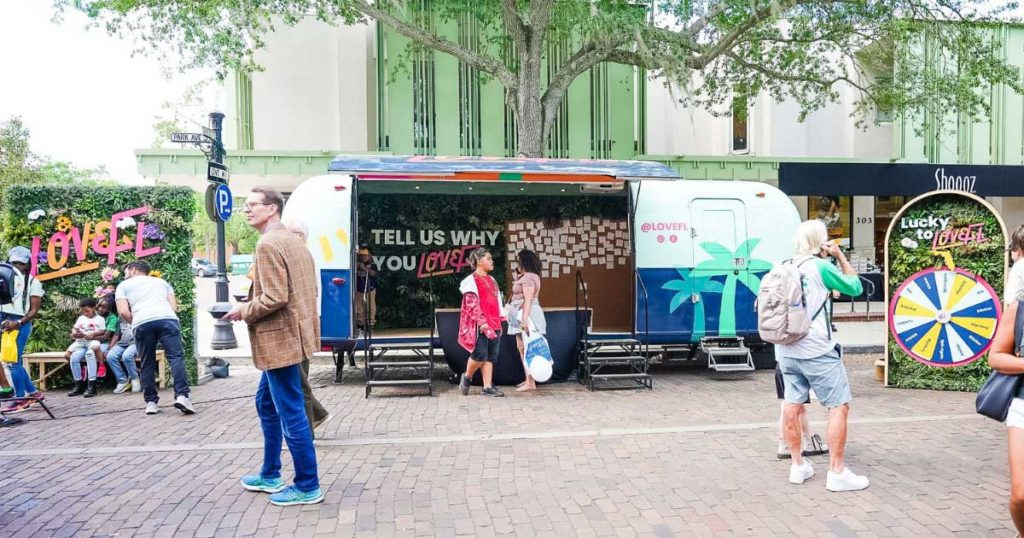
Four Ways to promote your destination:
- Collaborate with local businesses: Destinations can collaborate with local businesses to create experiential marketing campaigns that showcase their products and services. For example, you could partner with a local restaurant to offer a food tour highlighting the region’s culinary offerings.
- Leverage social media: Using social media is an easy way to create buzz around your experiential marketing campaigns. Tourism destinations can reach a wider audience and generate interest in the region by sharing photos and videos of their experiences on platforms like Instagram, TikTok, and Facebook. This will also tap into FOMO . People will see all the fun things offered and feel they need to book a trip to see for themselves.
- Offer incentives: Offer discounts or freebies to visitors participating in an experiential marketing event. This can encourage more people to take part and help boost the local economy by increasing foot traffic to local businesses.
- Focus on sustainability: Experiential marketing is a great way to promote sustainable tourism practices that benefit the local environment and economy. For example, a destination could offer eco-tours or promote local products using sustainable practices. Take it a step further by making your entire event sustainable. This will show attendees the authenticity of your destination as well as your commitment to preserving its beauty. Think about it. No one will want to go to a place that they think is run down and dirty.
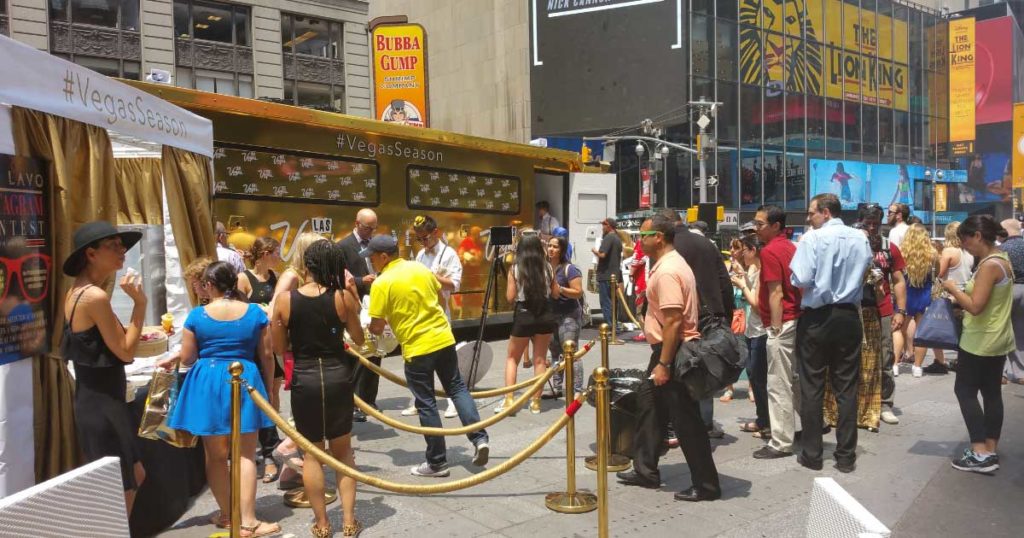
Tips for promoting your destination:
Promote what’s unique. Get into the mind of your audience. What makes your destination unique? Why should they go there instead of somewhere else? The experience doesn’t have to be HUGE. Sometimes the most simple option can influence people booking trips even more.
Go to the people you want to target. Think about it. If you’re a beach town trying to encourage visitors, hit up colder weather areas! Take the warmth and sand to people who have to walk around in thick jackets regularly and make them wish they were lying on the beach with a drink.
Make attendees feel like they’re there. One of the benefits of experiential marketing is that audiences can experience your destination firsthand. This will generate interest, excitement, and curiosity among the consumers, motivating them to plan a visit.
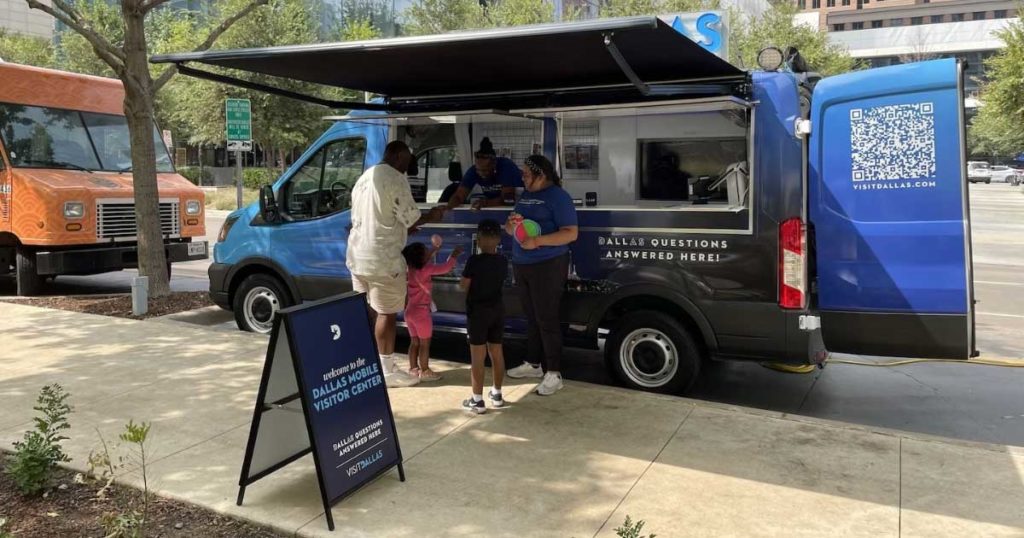
Use brand ambassadors from your location. Show what’s authentic about your destination. Local BAs can provide insight and valuable information, not just fluffed-up content you could Google. They can elaborate on these hidden gems and the ‘not to miss’ opportunities. This creates a sense of authenticity and credibility, differentiating it from other tourist destinations.
People thirst for travel . They are eager to get out and explore new places. Experiential marketing is the perfect way to give them a taste of what you have to offer!
Fields marked with an * are required
First Name *
Last Name *
Position Interested In * Select Position Interested In Marketing Content Specialist Shop Supervisor Skilled Fabricators Account Director General Bookkeeper/Accountant
Upload Resume *
This field is required
Please prove you are human by selecting the house .
Your email This field is required
Please prove you are human by selecting the plane .

How to Pivot Your Adventure Brand’s Messaging and Targeting to Local Tourism

How to Pivot Your Adventure Brand’s Messaging & Targeting to Local Tourism
* this blog was created in the peak of the pandemic, but we still find this information relevant in 2021*, reopening: geo-targeting & first-time customers.
Americans are getting outdoors in greater numbers than ever before. Families that have hardly ventured out for outdoor recreation are looking for fun things to do to replace cancelled summer and sports camps. Affluent travelers who enjoy heading overseas for their holidays have turned their attention to RVs and Sprinter vans and are driving to their newest adventures. While any of these groups may not have historically been your adventure brand’s customers… you have an opportunity to help them find you and understand the amazing guided and self-guided adventures you offer.
USA domestic outfitter markets have reopened already, or are in the process of reopening. It looks different thanks to new logistics complexity and significantly reduced operating capacities. International markets are still mostly closed. Air travel has restarted… while capacity and interest are increasing, it is still reduced.
Your glass half-empty may see a difficult landscape and the lack of traditional, tried-and-true customers. Your glass half-full may see geo-targeted marketing opportunities for driving distance customers, and new audiences who have never participated in the adventure you offer before.
Turn to “Local” Tourism to Find New Opportunities for Your Marketing
When your adventure brand might typically operate with visitors coming from far distances, your marketing efforts reflects this on a large scale. From the messaging you use to highlight your location as a true destination worth flying to, to the audiences you target for your paid campaigns: you have most likely fine-tuned your targeting. You have a finger on the pulse of your customer profile.
Now that travel trends have changed, adventure brands may be looking at an entirely different group of tourists: “local” tourists!
These tourists are a wonderful opportunity. They may or may not overlap the customers you’ve typically catered to. In fact, they may be younger, older, or they may travel in a multi-generational family setting. They may be of diverse ethnicities, backgrounds, or income levels. By pivoting as much as possible to attract more local travelers, you keep things moving in your business.
What is “Local” Tourism?
Local Tourism means you’re targeting people within driving distance of your operation. Local tourism can be considered in three categories.
- Local: Immediate neighboring towns and cities, all within an hour or two driving distance.
- Weekenders & Micro-cationers: Neighboring towns and states within an 8 hour driving distance.
- Road Trippers: Neighboring towns and states within a few days’ drive. (Think RV Camping folks, and the like.)
These are people you may have considered in the past, but have you run key marketing campaigns to them before that are highly focused, with tight geo-targeting? Time to jump into Google Analytics and look at where your guests have typically come from, within 1 – 3 days driving distance from you. This will help you start crafting a profile for them.
Geo-Targeted Marketing Messaging to Audiences Within Driving Distances
Reaching your local community.
Think of your local community as the immediate neighboring towns and cities within an hour or two driving distance. Some are your best customers. Others haven’t heard of you!
Sometimes locals are the last to consider the fun things to do in the area because they tend to look outside of their own backyard for adventure. Therefore, when developing your messaging for this audience, you want to make sure your content appeals to this prospect’s need for close fun… fun they can easily drive to, and fun that is lower risk (than, say, flying overseas to travel).
The campaign would most likely be “Explore Your Own Backyard” and include these key points:
- Geofence your paid social media campaigns to neighboring cities.
- Geofence your PPC campaigns to only locations within driving distance of your brand.
- Check your analytics carefully, where are people coming from, and capitalize on any shifts you see. You don’t need to spend funds to market to customers flying in yet—wait till those customers are ready to fly!
- Tailor your message for exploring hidden gems of the area, getting out of the house, and having fun with friends/family while social distancing.
- Messaging can include “Make a day of it!” and you can call out other fun favorite local activities.
- Are these new customers or new audiences for your brand? Think about a First Timer’s value-added offer, like a free souvenir from your shop.
Reaching Weekenders & Micro-Cationers from a Little Further Away
Oh, we love weekenders and micro-cationers! After all, these people are from neighboring towns and states that are still within driving distance but are most interested in a mini getaway to make the drive worthwhile.
The campaign would most likely be “A Getaway Close to Home” and include these key points:
- Geofence your paid social media campaigns to places within your state and possibly neighboring states that are within a day’s drive away.
- Test new, out-of-left-field audiences to find “first timers”. These are people who may not fit your typical adventure prospect profile, and who would be interested in trying something new to spice up their weekend. This is because what we see across clients is an influx of first timers who are finally choosing to explore the outdoors due to other activity options being limited. Consider working with campgrounds, RV rental and sales dealers, and other retailers on possible introductory options.
- Be sure to develop messaging, blog content, and/or downloadable assets that support information First Timers would consider important. This could include your long-standing leadership track record in the outdoors, extensive training and safety protocols, cancellation policies, what to expect on their first trip out with you, sample day itineraries, and top 10 things to do in your area.
Remember to optimize your new content for SEO! Need help with this? Just reach out!
So focus on the fact that this is truly an easy and fun getaway. Feel miles away. Escape and disconnect. It’s hassle-free. If guided trips are an option, consider highlighting this option as it’s a great way to ease into outdoor adventure for new adventurers, too!
Reaching Road Trippers
Road trippers can look like the family that loads up and drives around for a week or two, or they can look like RV campers, or maybe even folks who have historically opted for international travel over local options and want to scratch the travel itch but can’t/won’t fly yet.
The campaign would most likely be “Your Next Vacation is Only a Drive Away” and include these key points:
- Geofence your paid social media and PPC campaigns to neighboring states within driving distance.
- Your typical adventure prospect could fit this bill, but their geo-location becomes a key factor in this.
- Attempt to position your adventure alongside the fun things to do in your area, as well.
- You want to sell the sizzle of your location as a destination worthy of their effort to drive there and make a full vacation out of it.
- Share resources that make the logistics and planning easy for them. This can include sample multi-day trip itineraries for different age groups and fitness levels, top 10 things to do in your local area and nearby areas.
Help Position Your Local Region as a Clear Best Choice for a Successful 2020 Getaway
Here is a refreshing, yet not novel, concept around marketing—especially within the social media realm: focus on your local community.
Why? Because focusing on local can be a micro-movement that starts to put your community on the map as a destination that is worth driving to for a few hours or days of adventure. If your community is already a strong destination, you can emphasize this in your marketing message.
Are you leveraging all the tourism support of your local community?
- Are you getting inquiry lists from your local chambers, local economic development association, tourism development councils, sustainability councils, etc.
- Are you actively engaged in these local organizations so your brand is the first on their minds and actively referred?
- Partner up with non-profit organizations to extend your reach, attract new customers, and do good work.
- Tag those local businesses you love. IE: While you’re in town to have this adventure, here are some great places to: grab a coffee, shop, grab lunch, grab dinner, see another attraction, hike a great trail, must-dos, must-sees. Consider all the ways you can leverage this, too, with a downloadable visitor’s guide for the adventure lover, or a scavenger hunt for your customers to participate in.
- Create content that helps website visitors get educated, minimize their research time, and find important information easily—and make it easy for them to take action!
But, isn’t that supporting “the competition”?
Does this idea make your stomach knot up a bit? Are you worried about inadvertently taking business away from yourself?
The work of sharing more about your community is not, for example, about using hashtags that engage your competitors. It’s about finding ways to share what you love about your community with your followers. It’s about tagging your favorite local non-profit and sharing more about the work they do, and how it plays into the adventures you have. It’s about tagging your favorite local coffee shop as the place to stop in before you check in for your tour, or a local bar as the place to go after your tour for happy hour. If you have done the hard work of differentiating your brand experience and high value from your competitors, those new community visitors will be knocking on your door, too.
In conclusion, know that there is a balance you can strike where you are acting as a valuable resource for people planning to come out with you. When you begin to nurture a supportive role within your community, and new visitors start coming to your location to explore, everyone benefits.
The plan of action we all started the year with has to be tweaked and changed in order to make sure we’re showing up in the best way possible—and that will include reaching into a whole new pocket of local travelers…
This is a great opportunity for adventure brands to reach the people closer to home.
Want more tips specific to adventure companies during this period of disruption?

Digital Phishing Scams To Avoid in 2024
Amanda Rouse 2024-01-18T00:05:26+00:00 January 5th, 2024 |
Did you know that each year, about 83% of all organizations experience a phishing attack? If you or an employee of yours has fallen victim to this type of digital scam, you are not alone. A few years ago, scams were largely [...]
About the Author: Julie Thorner
.png)
Destination Marketing
Why localis.
Welcome to Localis, your trusted partner in leveraging data for destination marketing. We specialise in helping DMOs like yours make informed decisions using a combination of flight data, accommodation data, mobility data, and transaction data. We understand that destination marketing is not just about promoting a location. It's about strategic planning, understanding your target audience, and using data to make informed decisions. We're here to help you navigate this complex landscape with our unique combination of data analytics and industry expertise..

What We Offer
Event analysis.
Ever wondered about the economic impact of an event in your region or even in a neighbouring region? We conduct specific event analysis to assist in event reporting.
Competitor Research
We collect data from major booking portals and combine them to give your destination the most accurate insight into supply, demand, and online visibility for your region.
Forecasting Demand
A combination of historical data and future booking information, provides a forecast of visitation to the region 12 months into the future. Focus marketing efforts to increase demand.
Marketing Effectiveness
We help you clearly identify how your marketing campaigns have contributed to travel demand, allowing you to fine-tune budgets and ensure maximum ROI.
Accommodation Metrics
Data from major booking portals to give your destination the most accurate insight into supply, demand, and online visibility for your region.
Flight Data
We bring to the destination marketer the most crucial insights from flight data, including unserved routes and differences in interest at a city level.
Accommodation Data
Transaction data, mobility data, client testimonials.
.png)
Event reporting has previously been a very time-consuming effort and often, the required data has not been on-hand for us to build the reports that we need. By using Localis, we have been able to drastically reduce our reporting time and have a better understanding of what is happening in our region and why.

Mel Anderson

Subscribe to our monthly email newsletter!
Frequently asked questions, what is destination marketing.
Destination Marketing is the process of communicating to a target audience to attract visitors and positive economic impact to a specific geographic location.
What is a destination marketing organisation?
A Destination Marketing Organisation (DMO) is an organisation responsible for promoting a town, city, region, or country in order to increase the number of visitors.
Why is destination marketing important?
Destination marketing is crucial as it helps in attracting tourists, which in turn boosts the local economy. It also helps in creating a positive image of the destination, attracting investments, and promoting cultural exchange.
What is the importance of marketing in the tourism industry?
Marketing in the tourism industry is essential as it helps in promoting a destination, attracting tourists, and generating economic growth. It also helps in understanding the needs and preferences of the tourists, thereby offering them a personalised experience.
Examples of destination marketing
Destination marketing can take various forms such as digital campaigns, social media promotions, events, PR activities, and collaborations with influencers or travel agencies. For instance, a city might launch a digital campaign showcasing its unique cultural heritage to attract tourists interested in cultural tourism.
News & Advice

COMMENTS
Visiting friends and family is an often overlooked travel motivation for incoming visitors when it comes to tourism marketing. It was one of the top choices (62%) for travel motivations in the 2021 US Family Travel Survey.In a survey on why people travel published by Pacaso in January 2023, 38% of respondents named visiting family and friends as their primary reason for travel.
1. Distribute local print marketing materials. Design and print high-quality business cards, postcards, and flyers — even car magnets. Not only will these be a physical piece of your brand for customers to hold onto, but they can equip your customers with the tools to market on your behalf.
2 | Focus on what makes your destination unique. When asked what they want most out of travel this year, Americans are looking to "escape and relax, experience beautiful places, do new things and visit places they have been dreaming of.". Promote the unique, local experiences your visitors can't get anywhere else.
Embarking on successful destination marketing involves employing a set of strategic moves that go beyond the basics, ensuring your efforts resonate with your audience and leave a lasting impact. Let's dive into these key strategies and see what they entail. 1. Understand Your Target Audience.
Unlocking the Potential of Tourism Marketing: Your Ultimate Guide. In the ever-evolving tourism industry, destinations and attractions face the exciting challenge of distinguishing themselves in a world of travel choices. The secret to effective marketing in this dynamic space lies in a blend of creative flair, data-driven strategies, and an intimate understanding of your audience.
Changing Strategy in Difficult Times: Attracting Local Customers. In the past 6 months, we've seen the devastating effects that natural, political, and health disasters can have on the tourism industry. From protests in Hong Kong and Latin America to COVID-19 and the Australian wildfires, I think it's safe to say it's been a pretty tough ...
Destination marketing is a specific approach used by brands in the travel and tourism industry to promote a specific location. Whilst more conventional travel marketing tends to showcase the service or product of a travel company, destination marketing illustrates the features and benefits of a place to get more people to come to it.
Destination marketing plays a vital role in the tourism industry as it promotes and markets tourist destinations to potential visitors. The primary role and responsibility for any Destination Marketing Organization (DMO), destination marketing requires a comprehensive understanding of the target audience, an in depth analysis of the heart and soul of the destination, innovative branding, and ...
Promote local cultural activities and experiences. One of the most effective ways to attract tourists is by promoting local attractions and experiences. Whether it's historical sites, natural beauty, cultural experiences, or entertainment venues, these are the main attractions that draw tourists. Collaborate with local businesses, like local ...
In the realm of tourism, location-based marketing has emerged as a powerful tool to attract and engage travelers. By leveraging mass mobile data, crafting customer profiles, and identifying trade areas, you can develop a location-based digital marketing strategy that speaks directly to your target audience. As tourists increasingly rely on ...
Email*. U.S. tourism marketing offices also confirmed the three key areas where their roles have increased as compared to 2020: 1) engaging and aligning with key partners in private and public ...
Local marketing to attract travelers might be more focused that typical local marketing, but it uses many of the same techniques. Companies in cities that get plenty of tourist and pass-through ...
20. Run a contest or giveaway. A lot of things may change, but one remains the same: people love free stuff! Therefore, a great way to attract locals to your business is to run a contest or giveaway. You could promote it through social media, email, your website, or even the local paper or a nearby radio station.
Local (ads that appear Google Business Profile results) You can also narrow in on your ideal geographic regions and interests, including: Location: filters by state, ZIP code, city, metro area, etc. ... Marketing your tourism destination takes a multi-pronged approach. As we explored, knowing your audience is big. Consistency is key. And ...
Attract Local Tourists With Packages and Partnerships. During the slow season, some tour operators offer a local tourist package. It's typically an activity discount for people who live in the area. This isn't a usual "slow season" but these deals can attract new local customers looking for an outdoor adventure tour nearby.
The findings showed that local destination management organizations ought to prioritize organizational culture by coordinating learning and effective knowledge training to strengthen marketing communication capabilities while focusing on potentiating their resources to develop the destination by implementing a local creative tourism destination ...
The tourism industry is a very heterogeneous sector including many stakeholders serving diverse customer segments. Large tourism firms with substantial means (e.g., online travel agencies, airlines, national tourism boards, international hotel chains) are likely to have different digital marketing potentials compared to the majority of small and medium-sized tourism enterprises (SMTEs) with ...
This can encourage more people to take part and help boost the local economy by increasing foot traffic to local businesses. Focus on sustainability: Experiential marketing is a great way to promote sustainable tourism practices that benefit the local environment and economy. For example, a destination could offer eco-tours or promote local ...
Delivering a positive tourism experience is an expanding concern of destinations because of the growth of the tourism industry. The emergence of creative tourism has led to a continued necessity for local destination management organizations to pursue innovative and versatile strategies. This study aims to evaluate the organizational capabilities of local destination management organizations ...
Local Tourism: How to Pivot Your Adventure Brand's Messaging and Targeting to take advantage of this summer's local travel trends for your business.
Transaction data provides destination marketing organisations with a clear picture of local expenditure trends, facilitating the analysis of economic patterns, the provision of business support, and the forecasting of budgets. ... Marketing in the tourism industry is essential as it helps in promoting a destination, attracting tourists, and ...
which a tourist spends at least one overnight. It includes tourism products such as support services and attractions and tourist resources withinone day's return travel time. It has physical and administrative boundries defining its management, and images andperceptions defining its market competitiveness. Local destinations incorporate
Marketing is a critical management role for any company, but smaller tourism companies tend to undervalue the importance of successful marketing and handle it in an unstructured and informal manner.
The Charlotte Knights game on Tuesday offered the latest example of organizers and attendees of sports and entertainment events trying to make sense of the unexplainable.